BREATHING BELOW GROUND: REDUCING THE RISK OF SILICOSIS
TOP TIPS: GAS CYLINDER HANDLING AND STORAGE COMPLIANCE FROM PANDEMIC TO PREVENTION: ADDRESSING MANUAL HANDLING RISKS HOW SMART INSOLES CAN MITIGATE WORKPLACE SLIPS AND TRIPS

May 2023 | Vol.17 No.3
PP 100007391
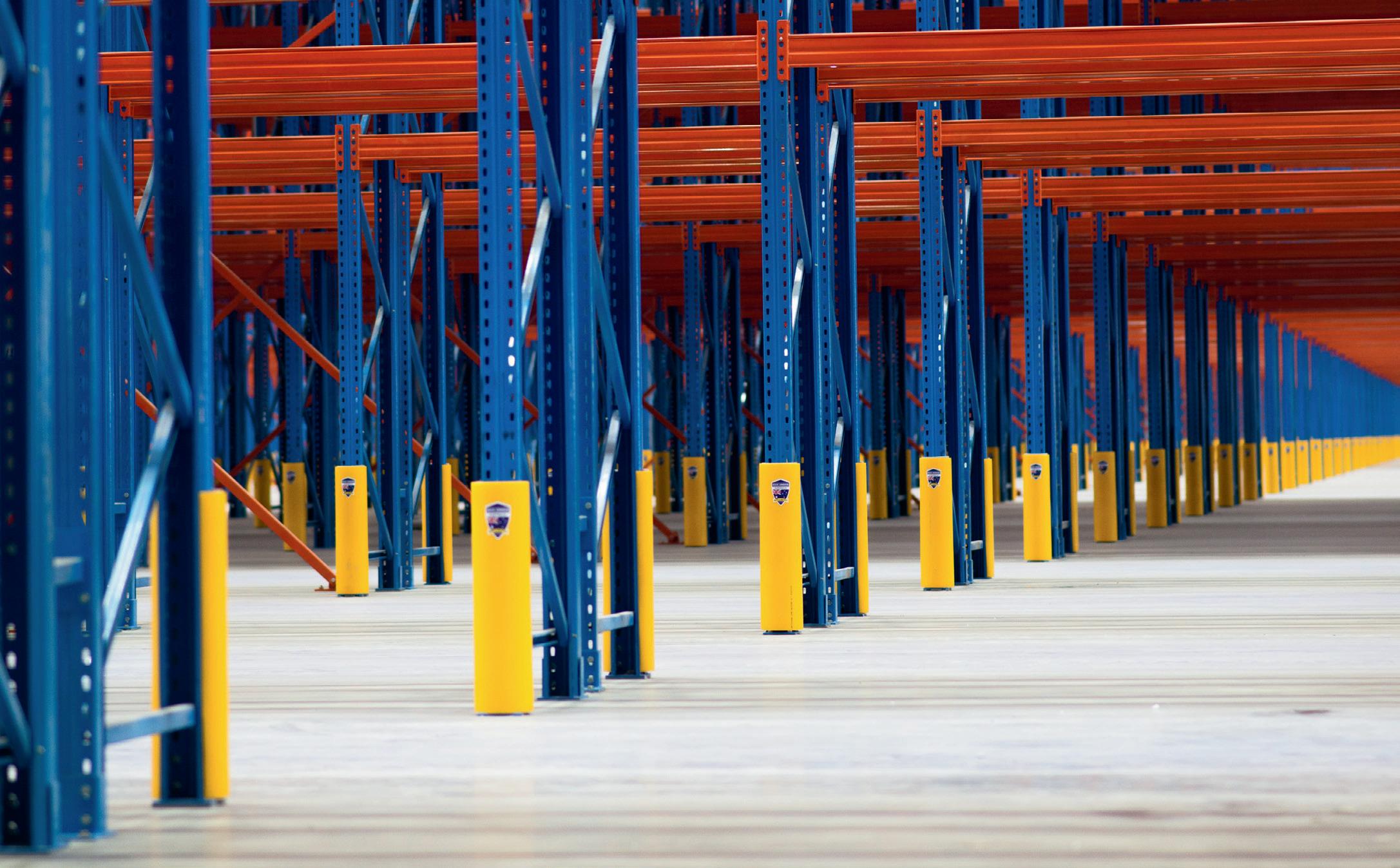


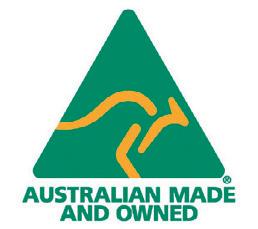
Pallet racking Protection • www.rackarmour.com.au • t: (02) 9722 0500 • e: info@rackarmour.com.au Proudly manufactured and distributed by ACP Australian Custom Pipes rack armour is the simple superior solution to pallet racking damage caused by forklifts. rack armour is a patented product, locally manufactured and internationally recognised. RACK ARMOUR 600mm Rack aRmouR Pallet Racking PRotection, also available in 400mm
The May 2023 issue of Safety Solutions focuses on the mining industry — in particular, respiratory protection for those working underground — and safe materials handling and storage.
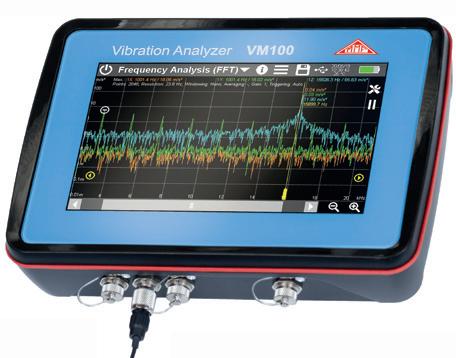
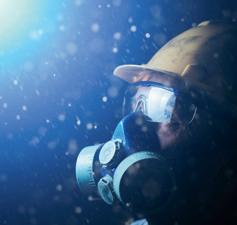
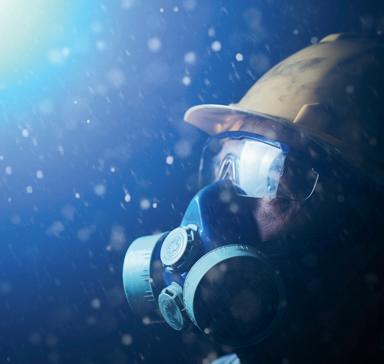
Respirable crystalline silica is a hazard commonly associated with the use of engineered stone, and this year the federal government agreed to consider a nationwide ban on this product to better protect workers. However, while much of the discussion surrounding silicosis to date has centred specifically on engineered stone, there are workers in a wide range of industries who are at risk of developing this deadly disease. In this issue, I speak with Tracey Bence, Fellow and President of the Australian Institute of Occupational Hygienists, about industry best practice for preventing exposure to hazardous airborne contaminants in mines and other underground workplaces.
Continuing with the theme of hazardous substances, toxic gas leaks, flammable gas explosions and projectile cylinder accidents are just some of the risks that workers face if compressed gases are not handled, stored or transported in a compliant way. In our ‘top tips’ section, Leisa Andersen provides some pertinent advice about how to remain compliant in the handling and storage of gas cylinders.



Finally, Andrew Ronchi takes a look at manual handling injuries in the workplace, and the five steps that organisations can take to reduce these injuries by 30–40% across a 12-month period.
 Amy Steed Editor, Safety Solutions
Amy Steed Editor, Safety Solutions
MAY 2023 - SAFETY SOLUTIONS 3 www.safetysolutions.net.au FROM THE EDITOR
ss@wfmedia.com.au May 2023 Vol.17 No.3 BREATHING BELOW GROUND:REDUCING THE RISK OF SILICOSIS TOP TIPS: GAS CYLINDER HANDLING AND COMPLIANCESTORAGE FROM PANDEMIC TO PREVENTION:ADDRESSING MANUAL HANDLING RISKS HOW SMART INSOLES CAN WORKPLACEMITIGATESLIPS AND TRIPS PP 100007391 CONTENTS SAFETY SOLUTIONS MAY 2023 4 In the news 8 Breathing below ground — reducing the risk of respirable crystalline silica 12 How a proximity alert system makes mining sites safer 16 Top tips: gas cylinder handling and storage 18 Using a smart insole to mitigate workplace slips and falls 19 Speakers revealed for Workplace Health & Safety Show Brisbane 26 From pandemic to prevention — companies address manual handling risks Your copy of Safety Solutions is available as an online eMag. READ ONLINE! www.safetysolutions.net.au/magazine BREATHING BELOW GROUND: REDUCING THE RISK OF SILICOSIS 100007391 Cover image ©stock.adobe.com/au/Dmitriy83
IN THE NEWS
REPORT RELEASED FOLLOWING INQUIRY INTO WA AGRICULTURE SECTOR
The report on the WorkSafe Commissioner’s independent Inquiry into the Agricultural Industry has been released, with most of its recommendations supported and under consideration. The Commissioner indicated his support for the majority of the recommendations, though two have been noted as they will require further work or consultation if the WA Government wishes to progress them. The Inquiry was conducted last year by former Chief Industrial Relations Commissioner Pamela Scott when WorkSafe Commissioner Darren Kavanagh called for it in June after the 12th workplace death in the industry over the preceding 12 months.
A total of 62 written submissions to the Inquiry were received and Scott held community meetings in person across the state and a series of webinars for those who could not attend in person. Scott also had meetings with more than 25 individuals and organisations, either in person or by telephone, to discuss safety issues in the industry. The result is a comprehensive report on health and safety in the agricultural industry that presents the findings and delivers eight recommendations that have been supported or noted by the WorkSafe Commissioner and Director General of the Department of Mines, Industry Regulation and Safety.
The recommendations include the establishment of a specialist agricultural team of inspectors and liaison officers and an advisory service, to conduct inspections, attend industry events and develop advisory material for the industry. The report also recommends raising industry awareness of safety with the participation of industry groups, including specific agricultural industry web pages and the utilisation of public events to educate farmers. A suite of codes of practice and guidance notes, directed to the agricultural industry, is also recommended, written as a simple ‘how-to’ and ‘how-not-to’ document. Timely information should also be given to the industry about the causes of fatalities and serious injuries.

The WorkSafe Commissioner expressed his gratitude to Scott for the Inquiry and assured the industry that he generally supported its recommendations and plans to consult the state government on the recommendations that require government action.
“I called for the independent Inquiry because I was increasingly concerned with the number of deaths in the industry. The statistics were not acceptable and I was concerned that the number of deaths had continued to increase. I was concerned that in some agricultural workplaces, the workplace culture seemed to accept much greater risk than any other industry, with farm production appearing to be put before the safety of families and workers,” Kavanagh said.
Kavanagh will now work with industry stakeholders, worker representatives and peak bodies to drive work health and safety improvements in the agricultural sector, in line with the recommendations of the report. The report and the Commissioner’s response are available on the WorkSafe Commissioner’s website.
SWA UPDATES GUIDE TO MANAGE THE RISKS OF TREE WORK
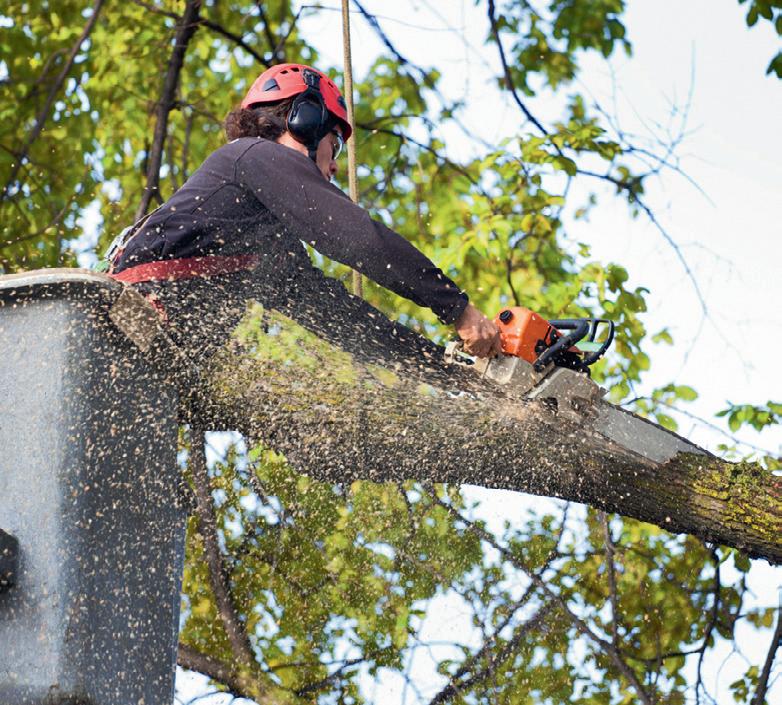
Safe Work Australia has released updated health and safety guidance for tree work; the Guide to managing the risks of tree work updates the previous guide. The most significant changes in the guide relate to duties around managing the risk of falls when accessing trees and when to consider providing an additional backup safety line for single-top access systems.
The guide provides practical information to assist persons conducting a business or undertaking (PCBUs) to manage work health and safety risks associated with tree trimming and removal work, such as lopping, pruning, wood chipping and stump grinding. The changes ensure consistency across Safe Work Australia’s guidance on managing the risk of falls, and the updated guide name reflects more commonly used industry terminology.
Employers are urged to ensure that they are aware of the changes and that they understand their WHS duties when managing the risks associated with accessing trees. The Guide to managing the risks of tree work can be accessed here.
4 SAFETY SOLUTIONS - MAY 2023 www.safetysolutions.net.au
iStock.com/YinYang
iStock.com/Nicholas Smith
MECHANIC’S FINE INCREASED AFTER WORKSAFE APPEAL
A Wodonga-based mechanic has had its fine increased to $350,000 following a fatal truck crash that claimed three lives in 2014, after the initial sentence was appealed. The Court of Appeal heard the $210,000 fine and conviction initially imposed on Heavy Mechanics Pty Ltd last year was manifestly inadequate.
In June 2021, the Wodonga County Court found the company guilty of a single charge of failing to ensure, as far as reasonably practicable, that people other than employees were not exposed to risks to their health and safety. In August 2014, a petrol tanker serviced by the company de-coupled on the WodongaYackandandah Road at Staghorn Flat. The detached trailer crossed the road and struck two cars travelling in the opposite direction, killing all three occupants including a four-year-old child.
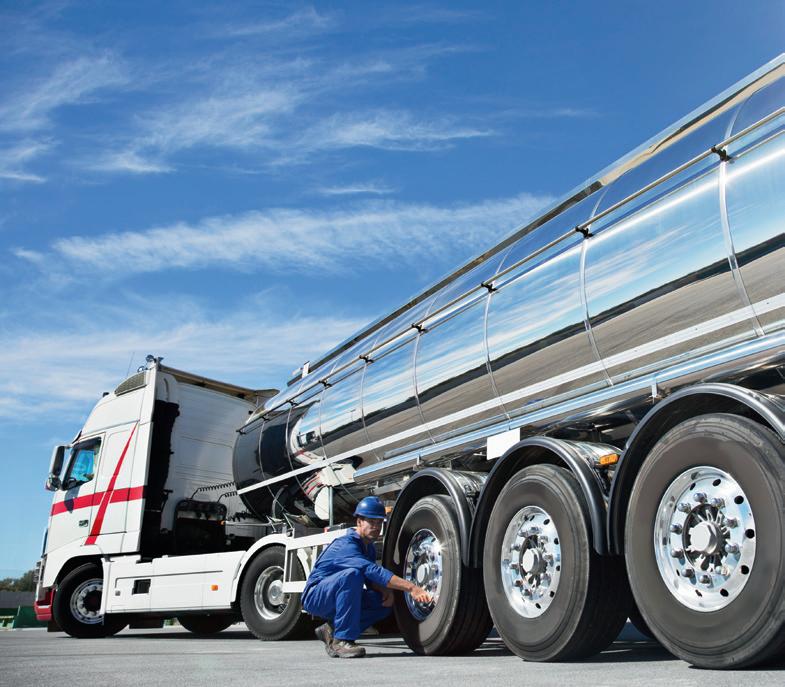
An investigation by WorkSafe Victoria found the tow-eye coupling that connected the prime mover and trailer was excessively worn and had failed under load. At the time of the incident it had been used for more than three years and 350,000 kilometres. Heavy Mechanics had serviced the truck just days prior to the incident, including testing the tow-eye coupling, but that testing did not involve an accurate visual inspection of testing while the truck was detached from the trailer, and this had limited the ability to inspect the parts involved.
A jury found it was reasonably practicable for the company to have conducted more accurate testing and inspections, which could have revealed the wear and tear to the coupling. WorkSafe Executive Director of Health and Safety Narelle Beer said WorkSafe will not hesitate to appeal sentences to ensure that penalties reflect the human cost of ignoring safety obligations.
“This horrific incident cost three lives, including a young child, and caused untold trauma to their loved ones and community. While no penalty can ever make up for this terrible loss of life, this sentence sends a strong message to duty holders using our roads that they must consider not only the potential risks to themselves and their workers, but also the potential catastrophic impacts on other road users or members of the public,” Beer said.
NEW CODE TO IMPROVE MENTAL HEALTH IN QLD WORKPLACES

The Queensland Government has implemented a new psychosocial code of practice, which came into effect on Saturday, 1 April 2023. The new code — Managing the risk of psychosocial hazards at work Code of Practice — is designed to empower Queensland businesses with practical information and guidance to create mentally healthy workplaces across the state.
The code, which is the first legally enforceable code of its type in Australia, will directly address psychological health risks at work, which can range from exposure to traumatic events to remote or isolated working. The code includes advice on how to comply with existing health and safety obligations, after a national review found many employers were unsure of their duties to manage psychological health and safety risks at work. It also provides practical examples of managing psychosocial hazards in the workplace, industry-specific case studies and a range of helpful templates that businesses can tailor.
Minister for Industrial Relations Grace Grace said research has shown that workers benefit from psychologically healthy workplaces through better individual health, increased job satisfaction, commitment, positive attitudes toward self-development and lower rates of work-related physical injuries.
“The Palaszczuk government is yet again leading the nation when it comes to the health and safety of our workers. We know that physical risks and hazards are often more visible: being able to prevent a psychological injury is not always as obvious. That’s why we created the code — to protect workers, support businesses to have a greater awareness of what signs and symptoms to look for and to provide a framework to minimise risks,” Grace said.
WHS Mental Health Ambassador Hayley Lewis encouraged business owners and workers to be vigilant to the signs of mental health. “I just wanted to swim, but this came with its struggles, and it’s when my mental health battle began. I was struggling on the inside, but this was the ’90s when mental health wasn’t something spoken about — especially in sport, it was considered a weakness. But things got so much worse when my happy 34-year-old sister who taught PE and had three kids took her own life; I knew she wasn’t herself but everyone who knew her didn’t see it coming. How could someone that seemed to have everything in life make that decision? Today, I am proud to be a mental health ambassador for Queensland. If you’re worried about someone, talk with someone you feel safe with, and know there’s nothing wrong if choosing to talk with a psychologist — it can be the best thing you ever do,” Lewis said.
Further information about the code and support for businesses is available online, with in-person regional events to take place in the coming weeks.
MAY 2023 - SAFETY SOLUTIONS 5 www.safetysolutions.net.au
iStock.com/Chinnapong
iStock.com/Martin Barraud
SAFEWORK SA CRACKDOWN ON UNSANITARY CONSTRUCTION SITES
Businesses that conduct construction activities have been urged to provide clean and reasonably located loos for staff after a recent report found that a lack of access to hygienic toilets was a major gripe among workers. A review of SafeWork SA’s database found that the construction industry accounted for 42% of 765 complaints associated with toilets in the past decade. Construction also accounted for half of all toilet-related improvement notices.
SafeWork SA has published new guidance on toilet facilities at construction sites in collaboration with the South Australian branches of the Communications, Electrical and Plumbing Union; Construction, Forestry, Mining and Energy Union; and the Master Builders and Civil Contractors Federation. Construction work activities include contractors such as tradies, communications and utilities. The campaign is in an education phase with compliance checks scheduled for the second half of 2023.
This followed a 2021 Electrical Trades Union report called ‘Nowhere to Go’ that found there were inadequate bathroom amenities for workers on many worksites around Australia. The report exposes unsanitary, unsafe, inaccessible and unsuitable amenities faced by many workers undertaking construction work activities. The report found that the issue disproportionately impacts women.
The report states that workers are forced to use bathrooms that are unhygienic, unclean or rarely cleaned; have no running water and soap; have no lock on the door, or are locked with no available key; and have no sanitary bins. The report also found that there were no separate female facilities, and that bathrooms were often a 20-minute round trip away from the worksite.
SafeWork SA Acting Executive Director Glenn Farrell said most complaints were associated with unhygienic portable toilets, adding that portable toilets must be maintained and serviced in a hygienic way to minimise the risk of infections and disease for workers and the public.
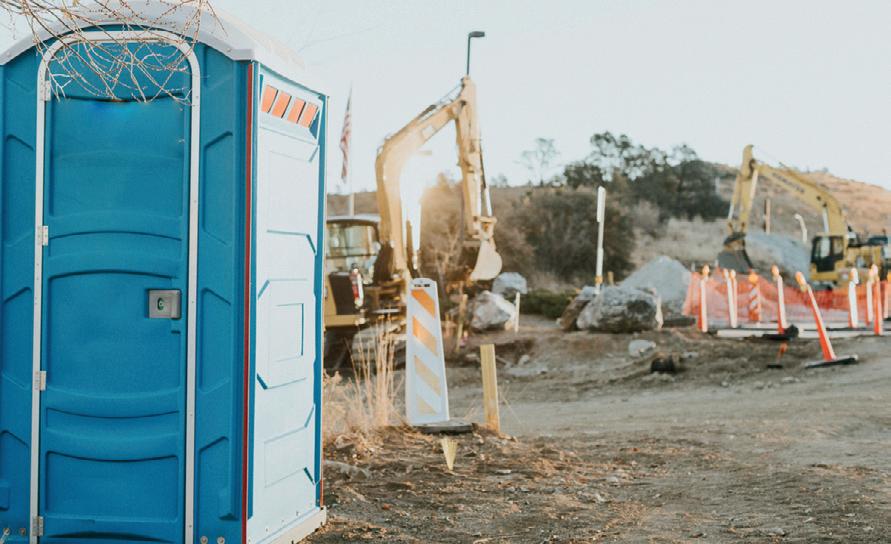
“A safe construction site starts with the fundamental basics of having a clean toilet, equipped with the necessary facilities, and we’re seeing an unacceptable number of improvement notices being issued in the residential construction sector. If the builder has a blatant disregard for suitable toilet facilities supplied to workers, there’s a good chance that other standards and safety performance onsite are compromised. The cleanliness of a site, including the toilet, is often a good indicator of safety and work standards,” Farrell said.
VIC FIREFIGHTERS TO RECEIVE NEW, SAFER UNIFORMS

Volunteers for the Country Fire Authority (CFA) in Victoria will receive new uniforms that provide better protection from heat, following an investment from the state government. Providing an improved level of protection from radiant heat and heat-related illness, the new uniforms will feature CFA’s iconic yellow and will be made of lighter-weight materials with better design for function and comfort. The uniforms are specifically tailored for men and women, providing a safe and comfortable fit for all volunteers.
The jackets will feature a new epaulette holder on the chest area, reinforced elbow patches, front-top and lower pockets on both sides, and radio pockets along the side seam. The protective trousers incorporate elastic back waistbands with large belt loops, two back pockets and hip pockets.
Minister for Emergency Services Jaclyn Symes visited Stewart & Heaton, the local manufacturer that will deliver the new wildfire personal protective clothing (PPC) to Victorian firefighters. The rollout of the wildfire PPC is supported by the government’s $126 million CFA Capability Funding package, with $10.85 million going towards the production of up to 29,000 sets of state-of-the-art protective clothing. Stewart & Heaton’s manufacture of the PPC will support local business, create 15 new jobs and support a further 15 existing roles.
Manufactured using Hainsworth Eco-Dry Shield woven fabric, the garments have an inherent fire-retardant performance to provide benefits to firefighters including comfort, ease of movement and breathability. The PPC will be provided to eligible CFA members in addition to existing wildfire PPC, meaning recipients can continue to use their current wildfire PPC in addition to the new garments.
The staggered rollout is expected to begin in the coming months. The design of the PPC was informed by consultation with volunteers providing input on what they wanted to see in their new uniforms.
“Our CFA volunteers go above and beyond every day to protect Victorians — we’re proud to deliver this new uniform that will help to protect them while they perform their important work,” Symes said. “CFA members shaped this new clothing, which means it is custom made to fit their needs and be comfortable in difficult conditions — all while being locally made.”
6 SAFETY SOLUTIONS - MAY 2023 www.safetysolutions.net.au
IN THE NEWS
iStock.com/Matt277 iStock.com/KATIE CORLEY
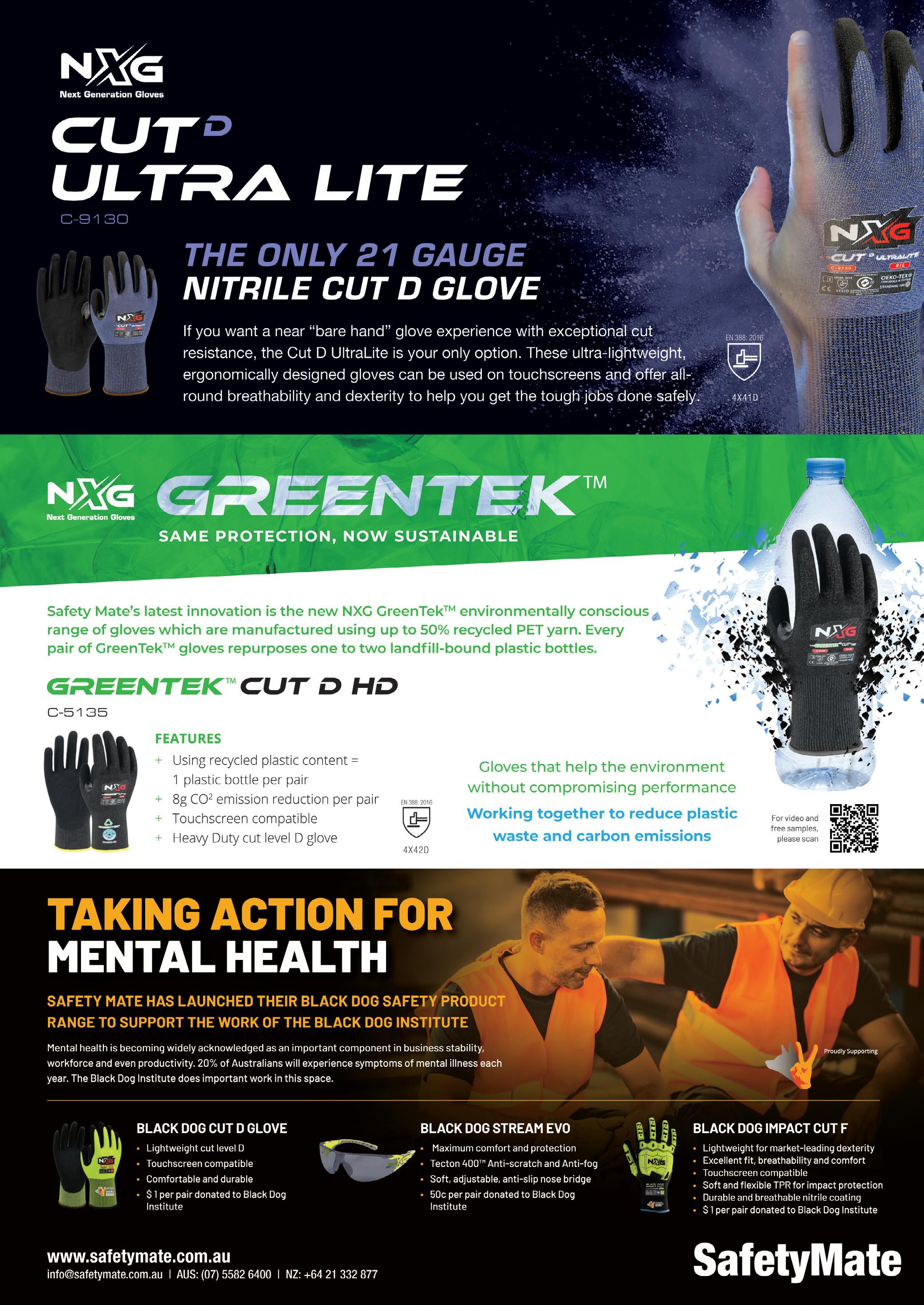
BREATHING BELOW GROUND REDUCING

THE RISK OF RESPIRABLE CRYSTALLINE SILICA
Amy Steed
The discussion about exposure to silica dust in the workplace is currently receiving a great deal of air-time across Australia. Unions are calling for more rights to conduct measurements of airborne contaminants underground, while state and federal governments have tasked Safe Work Australia to conduct a review into placing a ban on engineered stone in Australia. However, although the risks of silica dust are becoming more widely understood, many workers are still experiencing high levels of exposure. So what level, if any, is “safe”, and what can be done to better protect them?
8 SAFETY SOLUTIONS - MAY 2023 www.safetysolutions.net.au
Miners and underground workers at risk

While much of the discussion surrounding respirable crystalline silica has been in relation to the use of engineered stone, there are workers in a wide range of industries who are at risk of developing silicosis.
In fact, a 2016 study found that 6.6% of the total Australian workforce were exposed to respirable crystalline silica (RCS), and 3.7% were “highly exposed” when carrying out tasks at work. Miners and construction workers were “most likely to be highly exposed to RCS when performing tasks with concrete or cement or working near crushers that create RCS-containing dusts.”1
According to the Lung Foundation Australia’s draft National Silicosis Prevention Strategy 2023–2028 and accompanying National Action Plan — which was opened for public consultation in early 2023 — workers are generally at risk of silica exposure “if any material containing quartz is liberated from the natural environment (such as mining and quarry work), or when silica is used in industrial and manufacturing processes”. The report suggests that the occupations with the highest proportion of workers exposed to high levels of silica dust are therefore miners, construction workers, plumbers, handypersons and engineers. 2
What steps can be taken to protect underground workers?
The best protections for workers involve “higher-order controls”, which are measures that aim to prevent dust from being generated in the first place.
However, Tracey Bence, Fellow and President of the Australian Institute of Occupational Hygienists, said that in many highrisk industries, these types of controls are not being used enough to prevent silicosis.
“That’s where the use of high-grade personal protective equipment comes in,” Bence said.
MAY 2023 - SAFETY SOLUTIONS 9 www.safetysolutions.net.au
PROTECTION iStock.com/m_a_n
RESPIRATORY
“In those cases, it’s really about understanding how to best use tight-fitting respirators — sometimes called P2 dust masks. For instance, when they need to be worn, and for how long — because the harmful silica dust is fine and hangs in the air even after the grinding, cutting, crushing and drilling stops. Respirators like these dust masks require a personal fit-test and workers will need training to appreciate how masks are to be worn if they are really going to protect them.”
The Australian Workers Union (AWU) has called for immediate reform that enables unions to have better access to worksites to monitor dust levels. AWU National Secretary Daniel Walton said union officials needed clear rights to conduct measuring of airborne contaminants underground.
“Right now, in most states, if our officials try to get onsite with a dust monitor device they are blocked,” Walton said.
“Yet we know silica exposure is all but certain to be occurring at dangerous levels. Our members are working in environments so dusty they can’t see more than 50 metres in front of them. They’re getting covered from head to toe in dust and they walk out with that dust on them which continues to spread.
“We also know it’s common for companies to operate for days despite ventilation
breaking down. We know sites where water suppression is non-existent. And we know flimsy or damaged face masks are being regularly offered as PPE.
“We need union officials to be able to walk into a tunnelling site at any time to test if dust levels are unsafe. Companies should also have to automatically supply all dust monitoring results to the regulator and union promptly, instead of the drawn-out process that exists today,” he said.
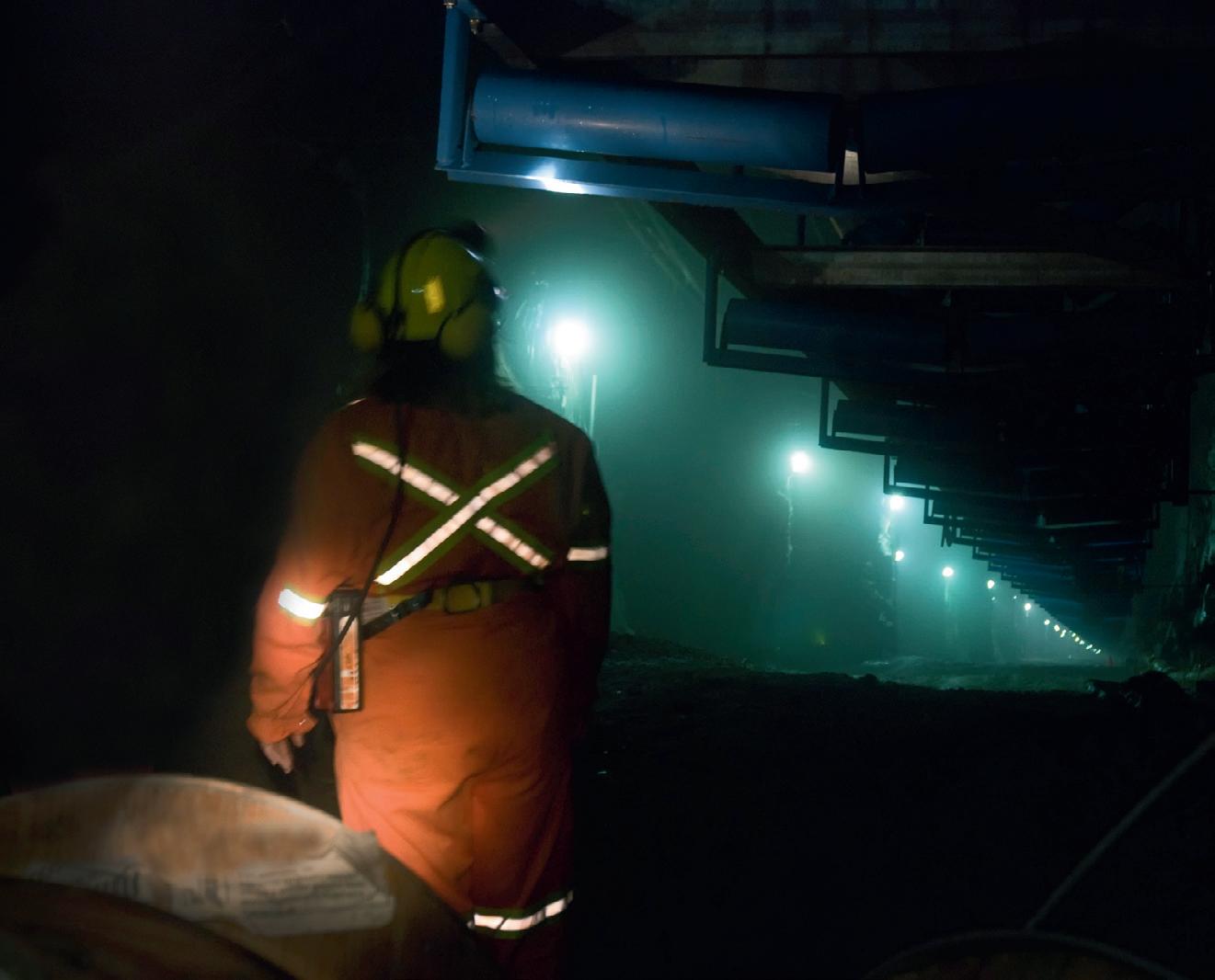
Bence said that while most companies were trying to do the right thing, “unfortunately though, dust prevention is not consistent. We know that some workplaces do not undertake any air monitoring, or when they do, they do not act on the results where exceedances of the Workplace Exposure Standard occur. Occupational hygienists know that only air monitoring will demonstrate that the invisible silica dust hazard is there and whether it is at harmful levels — so yes, air monitoring is critical.”
Best practice for ensuring underground air quality
According to Bence, companies following best practice should engage a Certified Occupational Hygienist; put significant effort into ventilation design, job planning and engineering controls focused on preventing dust emission; regularly review how effec -
tive their controls are; routinely measure silica dust exposure, and take prompt action where improvements are needed.
Occupational hygienists utilise personal sampling and analysis techniques to determine how much dust an individual worker is inhaling, as well as small and portable monitoring devices. However, companies also need to be aware of overall dust levels on the worksite, and there is a range of technology available for occupational and environmental monitoring purposes.
“Newer developments in environmental monitoring and area sampling technology mean companies are now able to monitor the air in an entire plant or underground area with a series of sensors to work out where the dust is coming from. These days the devices are getting smaller and cheaper, so we can use more of them and protect more people,” Bence said.
“Silica dust is a microscopic hazard, whereas with something like working at heights the dangers are very apparent and comparatively easier to resolve. One difficulty with underground areas is that they often require extensive ventilation systems — and these are not easy to design, build and implement. They are also expensive to keep running and to put in place after an airborne hazard has already been realised. So it’s better to recognise from the outset that a project is going to create silica dust, and get the ventilation system in place from the beginning, as part of the way a company does business. If employers can do that, then everyone’s health can be protected.”
Bence also recommends increased company-wide training to support greater awareness on the issue of respirable crystalline silica and other harmful particles that may be in the air.
“Our free Breathe Freely program has several sections for construction, quarrying, mining, engineered stone and welders. The training is available here: www.breathefreelyaustralia.org.au, for free — for any worker or employer — they just have to pick it up and roll it out,” she said.
1. https://pubmed.ncbi.nlm.nih.gov/26888888/
2. https://lungfoundation.com.au/wp-content/uploads/2023/02/NSPS-NAP-Fifth-Full-Draft-Copyfor-Public-Consultation.pdf
10 SAFETY SOLUTIONS - MAY 2023 www.safetysolutions.net.au
iStock.com/RyersonClark
RESPIRATORY PROTECTION
WE KNOW THAT SOME WORKPLACES DO NOT UNDERTAKE ANY AIR MONITORING, OR WHEN THEY DO, THEY DO NOT ACT ON THE RESULTS WHERE EXCEEDANCES OF THE WORKPLACE EXPOSURE STANDARD OCCUR.
Welding fume extraction system
Local exhaust ventilation (LEV) has radically evolved as increased awareness around the dangers of welding fume exposure has coincided with major technological advances.
This is exemplified by the Bomaksan BENCH (part no. BBENCH), which integrates all the benefits of mobile LEV fume extraction into a downdraft welding bench. This solution incorporates extraction into the work surface itself, so businesses can avoid going to great lengths to accommodate a fume extractor without impeding the welding process.

Welding fume is then captured at the source, which is considered the most effective way to remove hazardous particles from welding environments. To that end, the bench is equipped with two cleanable filters that combine high filtration efficiency with a large surface area, enabling longer run times between cleaning and lower ownership costs. The welder will be advised when cleaning is required via a filter clog display.
Moreover, the Bomaksan BENCH has an extremely userfriendly layout and design, featuring a fan rotation direction display, on/off switch, a working hour counter, and expandable side panels to maximise the work area if necessary. Ultimately, this system aims to serve as a natural extension of the welder’s process: designed from inception to be intuitive and impactful in equal measure.
AWS Pty Ltd
www.apexweldingsafety.com.au
Electrical testing panel for Capstone testing and assessment
The 710B Electrical Test Board from Bestech comes with user-friendly computer-controlled HMI and can be remotely activated by instructors. These boards are used for training first-year apprentice electricians through to students studying for their LET, LEP, SWP — as well as construction wiring and mandatory testing.
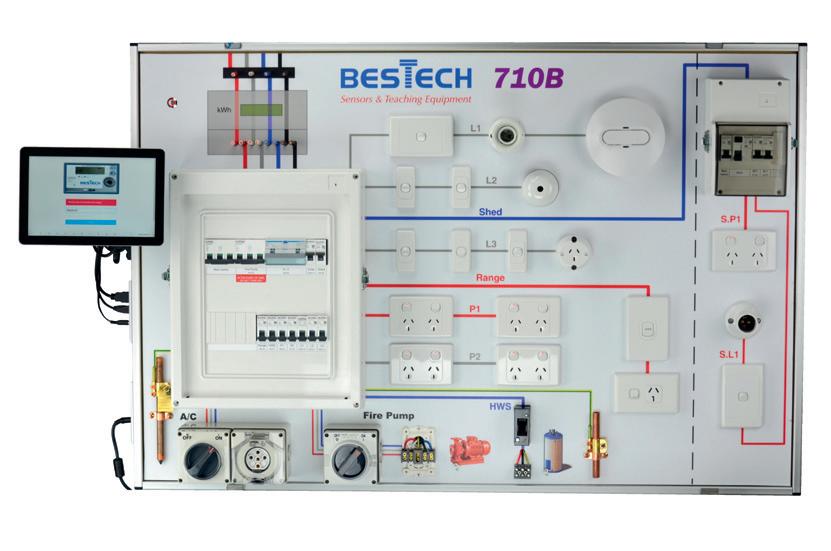
The 710B panel complies with AS/NZS 3000:2019 and suits the assessment for both the current and previous electrotechnology training package. This new generation, computer-controlled electrical panel particularly aids in the assessment of student competency in UEEEL0039.
An upgrade from its 710A predecessor, the 710B panel involves the installation of a 10 ″ touch screen to enable control and fault insertion without having to have a PC or laptop connected to the board. The faults can also be remotely activated via the embedded web server when the board is connected to the network. Optionally, teachers can also choose to connect via a network using a Wi-Fi or Ethernet.
Equipped with up to 48 faults, teachers can ensure that different fault scenarios are available for each student for fair assessment. The board also remembers any active faults, which allows it to automatically reapply the fault if unexpected downtime/power outage occurs.
In addition to TAFE training, the 710B panel can be used by industry for training on-site contractors, as well as upskilling employees with up-to-date knowledge in order to ensure safety in the workplace.
Bestech Australia Pty Ltd
www.bestech.com.au
Gas detection instruments
CAC Gas & Instrumentation provides calibration and bump test solutions to enhance the safety of workers through the accuracy of personal, handheld, vehicle-mounted or fixed gas detection instruments. The company offers solutions from a single, disposable cylinder to complete gas distribution systems connecting multiple gas mixtures to hundreds of docking stations.
As a specialty gas manufacturer, CAC Gas also supplies calibration gas, regulators and accessories for a range of gas detection instruments, whether they are portable or fixed. Gas mixtures are also available in a variety of sizes from 34 to more than 7500 L gas volume, with gas delivery equipment, to meet users’ requirements.
Gas mixing and dilution systems are available that can be used for multi-point or ‘span’ calibrations for all types of instruments, even where ISO17025 or NATA calibrations are required.
With locations in Sydney and Singapore, CAC Gas is able to import and supply specialty gas mixtures globally.
The company stocks a large number of gas standards and enters into supply agreements with organisations where immediate delivery is required. Its products can be used in applications where calibration gas mixtures are required.
CAC Gas & Instrumentation
www.caggas.com.au
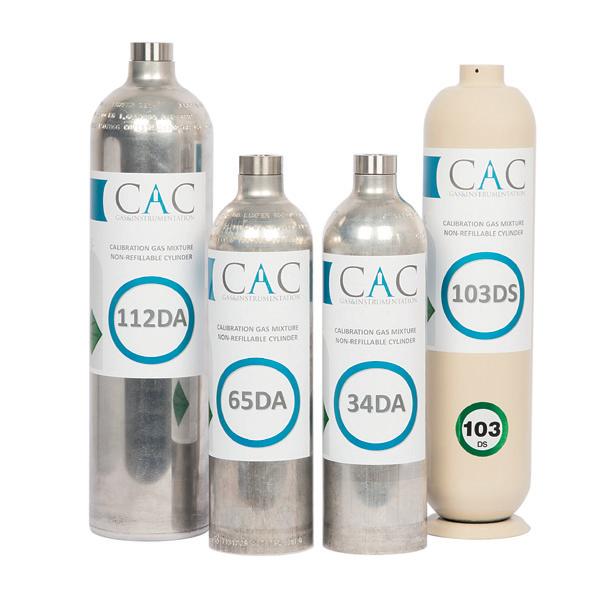
HOW A PROXIMITY ALERT SYSTEM MAKES MINING SITES SAFER
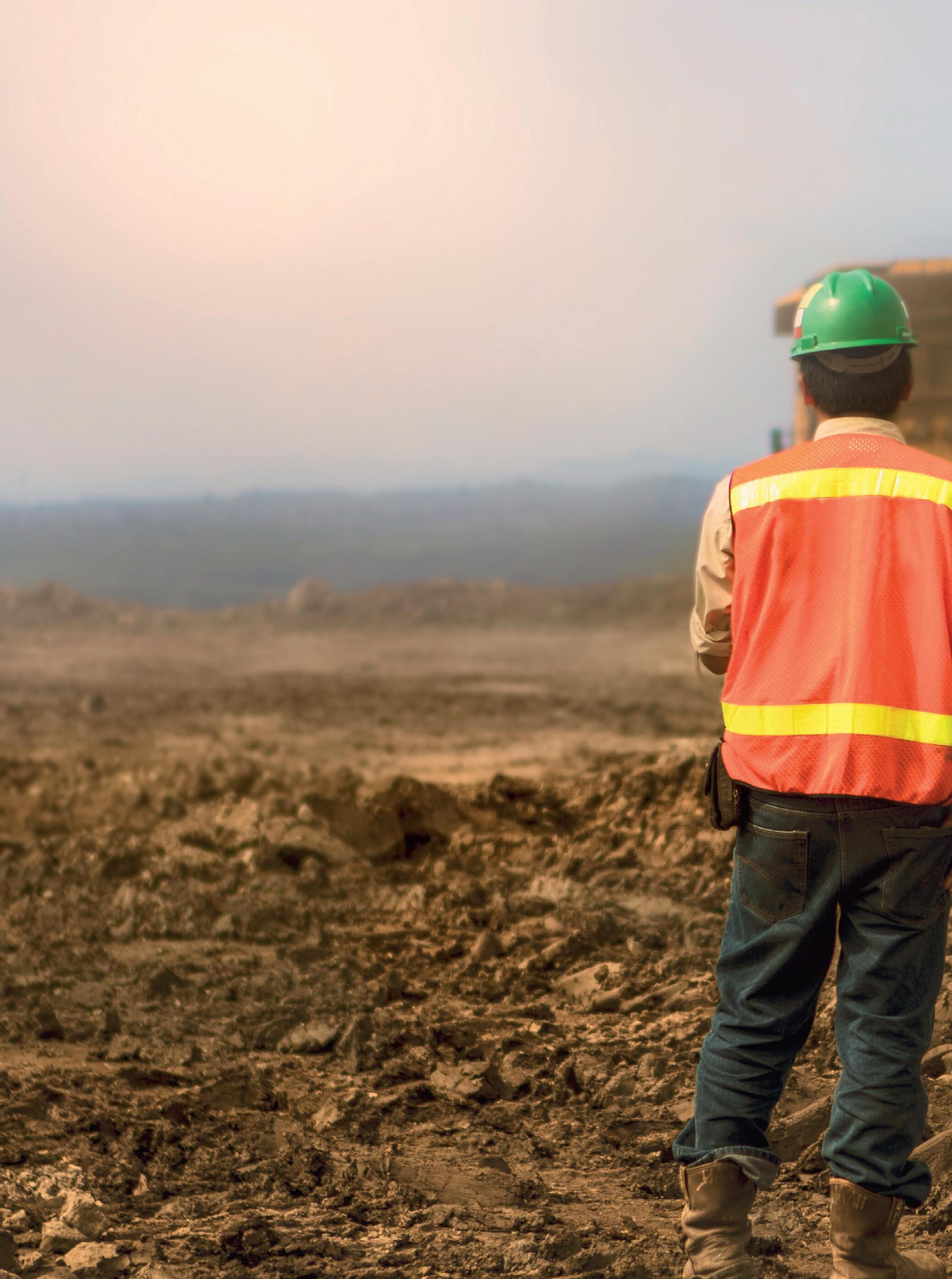
Proximity alert systems can help to prevent accidents and ensure safety in environments such mine sites (including underground), oil and gas exploration, and construction sites. These systems operate by detecting the presence of people, heavy vehicles, machinery, trucks and other mobile equipment in a particular area, and issuing an alert — usually audio and visual — if they come too close to the danger zone.
The main benefit of a proximity alert system is to prevent injuries and accidents, and improve the overall safety of every mine site. These alerts can save lives, for example: in a drilling area, the proximity alert system can be used to monitor the movement of heavy machinery, ensuring workers remain a safe distance away from moving machinery or equipment. Proximity alert systems can further assist by increasing productivity and minimising downtime. By alerting workers to potential dangers, the system reduces the need for manual inspections and other interventions.
12 SAFETY SOLUTIONS - MAY 2023 www.safetysolutions.net.au
Naaman Shibi, Pervidi
The proximity alert system typically consists of two components: a transmitter and a receiver. The transmitter is usually a personal tag that is either attached to hard hats or worn by workers. Meanwhile, the receiver is usually a sensor/alarm/visual unit attached to or located in the danger zone, and constantly scans for the presence of any tags. When the receiver detects the presence of the tag within the predetermined danger zone, it triggers an alarm, alerting the operator to take necessary action.
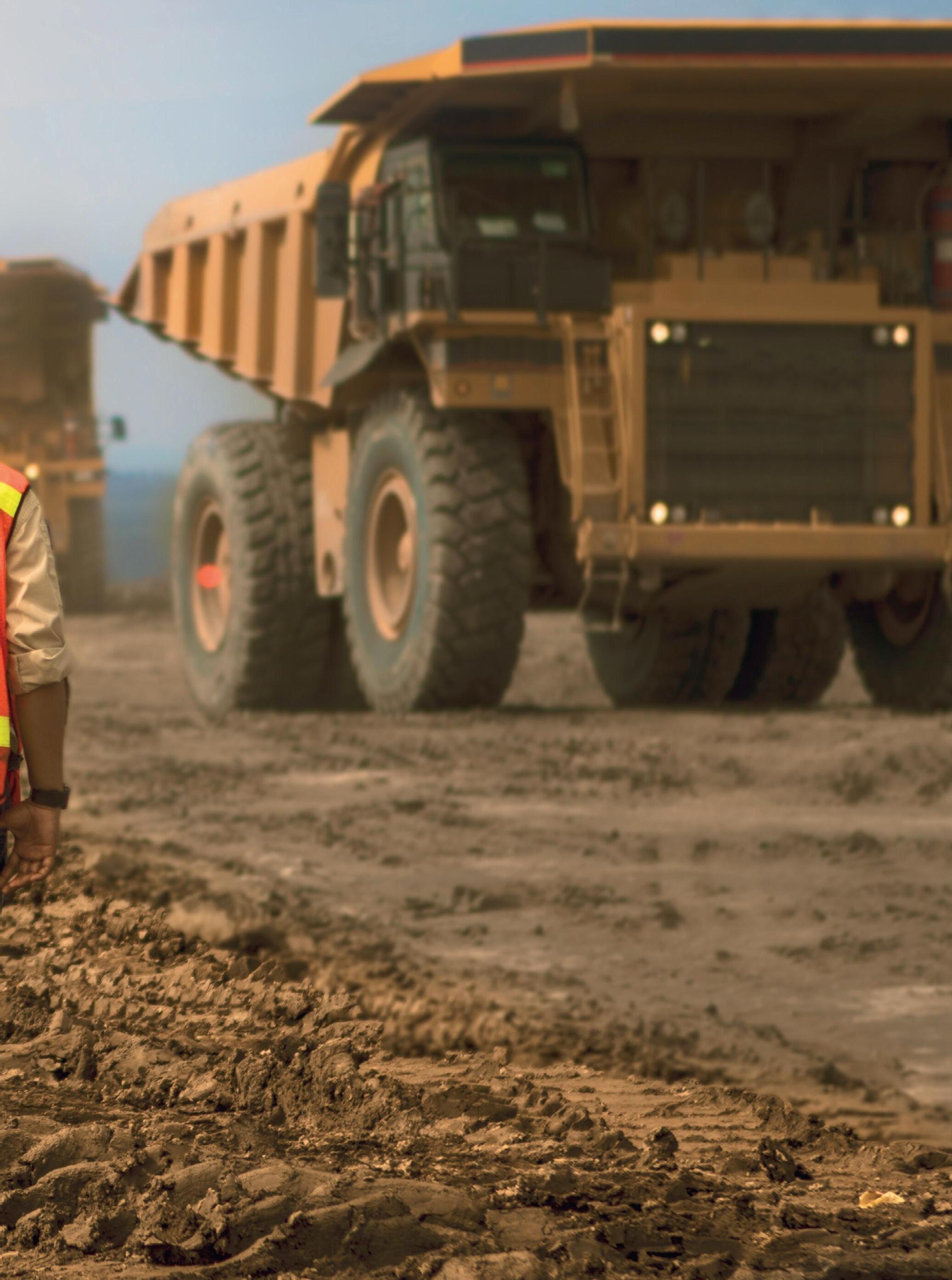
There are different types of proximity alert systems available, each with its own unique features and capabilities. Some systems require connectivity and complex settings, while others can be set up in minutes without any dedicated infrastructure. Some systems are designed for use in harsh environments and are built to withstand extreme temperatures, vibration and dust. Others are designed for use in commercial settings and are smaller, more compact and easier to install.
Some systems will also allow dynamic alert configuration, for example: first audio alert within eight metres, second alert within five metres, first visual alert orange and second alert red. Another option is to access the proximity exposure analysis to provide reports to all stakeholders.
Regardless of the type of proximity alert system selected, it is important to ensure that the proximity alert system is properly installed and maintained. This includes testing the system regularly to ensure that it is working correctly and providing training to all stakeholders on how to use the system effectively. It is also important to choose the right system for the specific needs of the workplace and environment.
Pervidi www.pervidi.com.au
MAY 2023 - SAFETY SOLUTIONS 13 www.safetysolutions.net.au
PROXIMITY ALERT SYSTEM iStock.com/rudi_suardi
Compressed air breathing cylinders
Alongside Dräger’s PSS AirBoss, it has also released the Dräger NANO Cylinder (NLL), Type 4. The NANO Cylinder is one of the lightest cylinders currently available on the market. Lower weight means reduced fatigue for the responder, even with a twin cylinder set up. A weight reduction of 32% has been achieved when compared to a Type 3 carbon composite cylinder, according to the company.
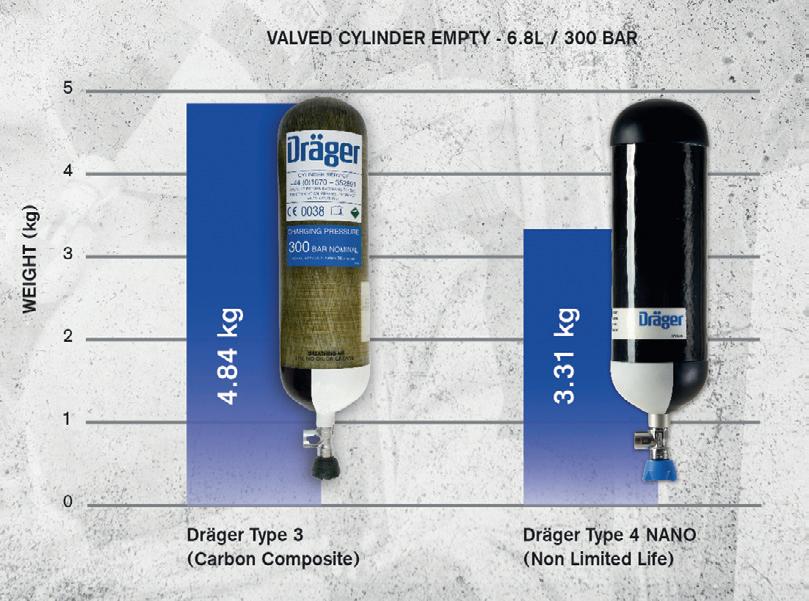
Cylinders with a non-limited life can be used indefinitely when proper maintenance and periodic inspections are fulfilled. This makes it an investment that not only gives users peace of mind during a response, but also reduces cost of ownership in the long run.
To enhance safety programs at site, the inclusion of an excess flow valve (EFV) can be incorporated into the cylinder fleet. An EFV can prevent the uncontrolled outflow of gas in case of an unintentional opening or damage to the cylinder valve. This flow limiting feature is automatic and activates or deactivates the excess flow without hindering performance. In addition, approved according to EN 144-2018, the valve offers even greater resistance against forceful impacts while still ensuring full functionality. With Quick Connect technology, users can change cylinders quickly without the need for screwing or unscrewing the handwheel manually. This saves time and helps to ensure a safe connection between the cylinder and breathing apparatus.
Draeger Australia Pty. Ltd.
www.draeger.com
Safety footwear
Puma Safety has released its Heritage range of safety footwear based on the design of Puma’s classic sneakers.
Initially, four Heritage styles will be launched on the Australian market — three styles based on Puma’s street-style sneakers and one based on its traditional basketball style. Extensive research has gone into developing the range, resulting in all styles offering high standards of comfort and safety.

To keep the footwear light and metal-free, the range features a fibreglass toe cap to provide extra toe space and 200 J impact protection. A 300°C heat- and slipresistant rubber outsole, combined with a herringbone tread profile, is designed to enhance grip.
Safe radar systems
The safeRS and safeRS3 safe radar systems are electro-sensitive 3D protective devices for safe personal detection with high machine productivity. The devices protect applications in accordance with PL d or SIL 2 in line with ISO 13849-1 and IEC 62061. A radar system consists of an evaluation unit and up to six sensors which enable switchover to a protected mode as soon as a person enters the protected area.
The high resistance to dirt, dust clouds, wood chips, plastic particles and sparks as well as the insensitivity to ambient light such as solar radiation or infrared waves facilitates operation, even under tough ambient conditions. The radar systems feature a rugged sensor housing and quick and easy commissioning.
The sensors provide safe hazardous area protection at machines and vehicles both in- and outdoors. They are also designed to provide safe automatic restart in complex applications such as robot cells due to the 3D monitored area. The devices are suitable for harsh environments, such as wood processing, steel production, and paper and plastic production.

SICK Pty Ltd
www.sick.com.au
The range also features a shock-absorbing cell embedded in the heel, along with a breathable lining and moisture-absorbing footbed. The range is also electrostatic discharge (ESD) rated, to reduce the build-up of static electricity. Selected styles are available in both women’s and men’s sizes (EU 36–49; UK/AU 3–14), from leading safety retailers.
Trading Downunder is the exclusive distributor of Puma Safety products for Australia and New Zealand.
Trading Downunder
www.tradingdownunder.com.au
14 SAFETY SOLUTIONS - MAY 2023 www.safetysolutions.net.au

TOP TIPS: GAS CYLINDER HANDLING AND STORAGE
Leisa Andersen, Content Marketing Manager, Storemasta
16 SAFETY SOLUTIONS - MAY 2023 www.safetysolutions.net.au
iStock.com/Oksana Sazhnieva
Gas cylinders are used for a range of applications, from heating to welding and medical purposes. However, it’s important to remember that these commonly found chemicals are classed as dangerous goods.
When working with gas cylinders, it’s vital not only to be aware of the hazards associated with these cylinders, but also that workers are in an environment where these hazards are being effectively controlled.
Toxic gas leaks, flammable gas explosions and projectile cylinder accidents are just some of the hazards that present themselves if compressed gases aren’t handled, stored or transported in a compliant way.
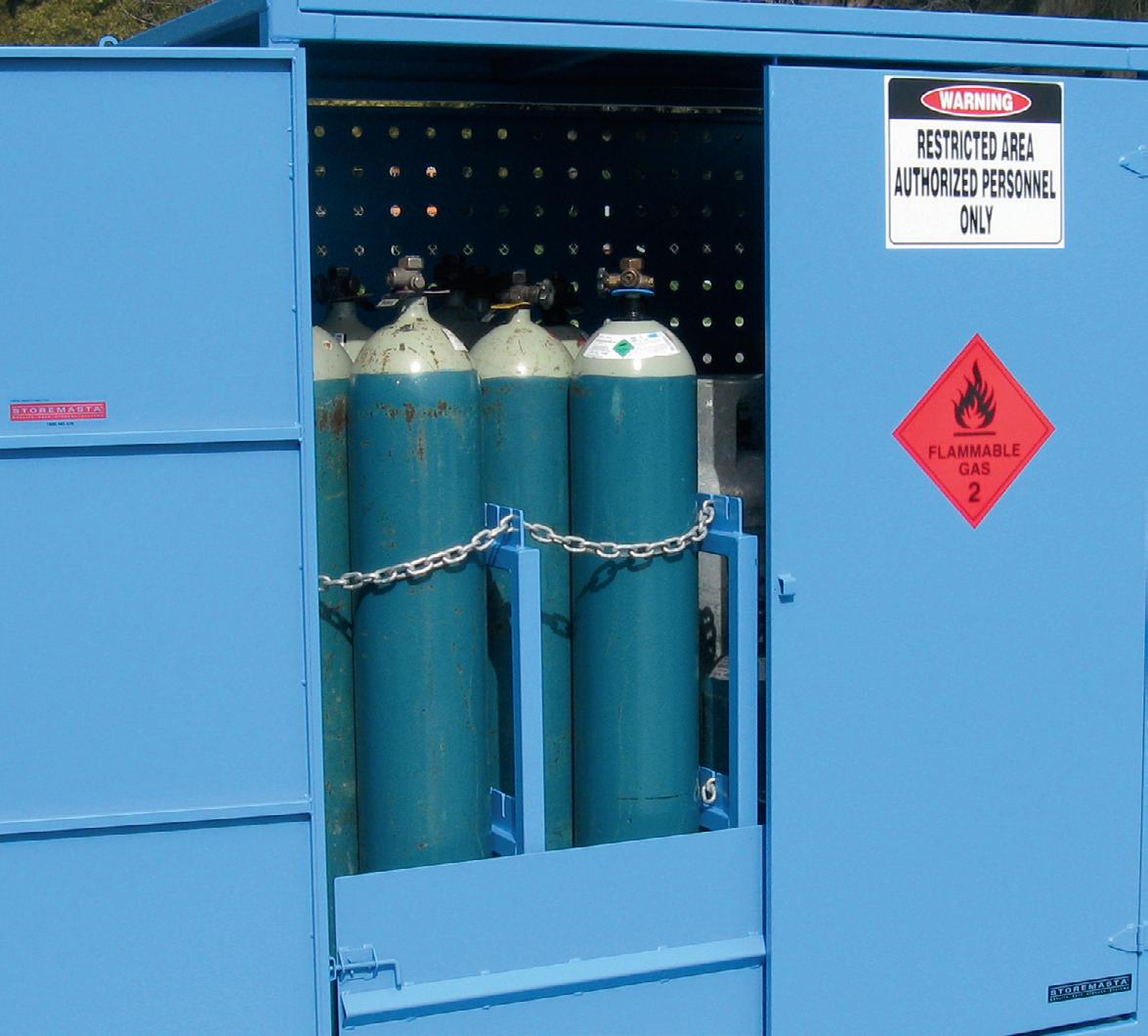
So, how can organisations protect their people from gas cylinder hazards? Here are some simple tips that can help businesses to stay safe and compliant.
Protect gas cylinders from impact damage
Due to their elongated design, gas cylinders are prone to toppling or being knocked over. However, care must be taken to ensure that no damage occurs to the cylinder or the valve.
If the gas bottle valve is damaged, the sudden release of pressure could cause the cylinder to become a deadly projectile. The damaged valve will also release harmful gas into the breathing zone of workers, which could result in a range of health issues from asphyxiation to toxic gas poisoning.
Gas cylinders can be protected from impact damage by using compliant handling and storage equipment that keeps cylinders in the upright position, with restraints. It’s also a good idea to train and re-train staff on how to safely work with gas cylinders so that health, physical and physiochemical hazards are avoided.
Choose compliant gas cylinder storage equipment
Gas cylinders should be stored according to the guidelines of AS 4332 – The storage and handling of gases in cylinders . Compliant storage will meet a range of requirements necessary for maintaining safety at a worksite.
These gas store construction requirements include key safety measures including a non-combustible construction, sufficient ventilation, cylinder restraints and the applicable dangerous goods signage. Many businesses often choose gas storage cages, as these purpose-built storage solutions are cost-effective and compliant to Australian Standards.
Make sure that staff never leave cylinders on benches, floors or in other areas of the workplace which aren’t deemed to be compliant storage. It’s also helpful to develop a system where gas cylinder deliveries are immediately taken to the appropriate storage area, as this will minimise the risk of the gases being incorrectly stored or handled by untrained staff.
Select and maintain correct PPE
Selecting the right PPE for each specific job task that involves gas cylinders is essential. The PPE selected will always be determined by conducting a risk assessment that includes consulting the safety data sheets (SDSs) for each of the gases being used.
The SDS will have a section that will outline the PPE that is required. For example, a toxic gas cylinder may require PPE such as overalls, chemical goggles, elbow-length impervious gloves and a full face shield.
Organisations are also obligated under WHS laws to maintain their PPE, so that staff are protected from chemical exposure through regular inspection, cleaning, decontamination and maintenance of personal protective equipment.
Segregate gases
When dealing with any type of gas or dangerous goods in the workplace, it is essential to be aware of the segregation requirements.
Other handy hints:
• Check cylinders for any signs of damage before use.
• Isolate gases from heat, ignition sources and combustible materials.
• Regularly inspect, clean and maintain gas cylinder handling and storage equipment.
• Conduct a risk assessment so all hazards are effectively controlled at the worksite.
Generally, different dangerous goods classes of gases must be separated by a minimum of three metres, as these gases can react dangerously with each other.
To determine the segregation requirements for gases being used, check the safety data sheet. Employers can check the segregation chart on the Safe Work Australia website.
Keep in mind that gases must not only be separated from other classes of gases, but they must be segregated from all incompatible substances — including other onsite chemicals.
Storemasta www.storemasta.com.au
MAY 2023 - SAFETY SOLUTIONS 17 www.safetysolutions.net.au
GAS STORAGE
USING A SMART INSOLE
TO MITIGATE WORKPLACE SLIPS AND FALLS
Researchers have developed a shoe insole that is embedded with pressure and motion sensors, helping to identify high-risk areas and mitigate workplace incidents in real time.
Slips, trips and falls (STFs) are one of the top causes of major injuries in the workplace. According to the International Labour Organization, more than one million workers globally are injured at work on a daily basis, with slips and trips being the primary causes.
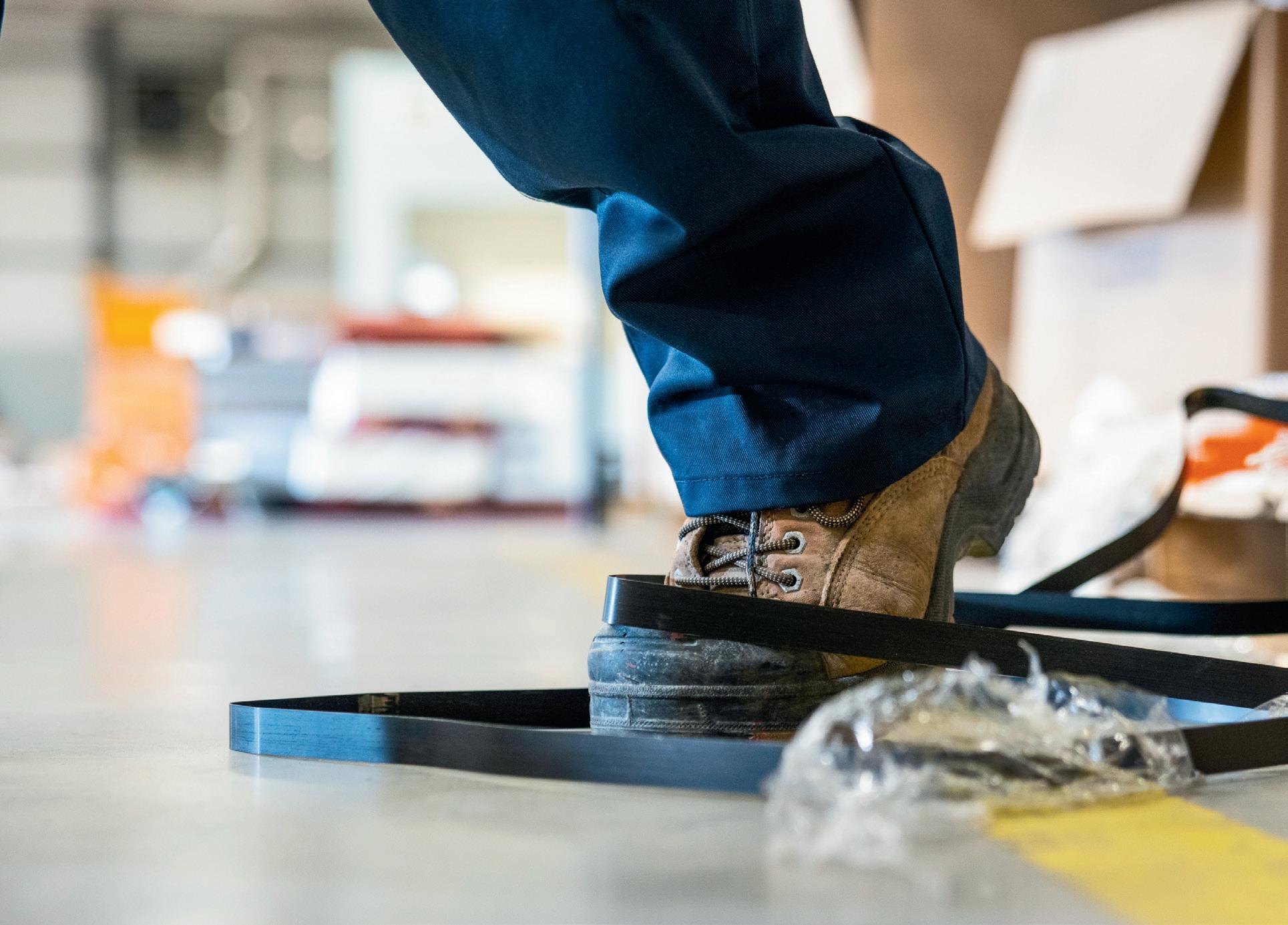
Timely detection of STF risks is crucial in helping to enhance workplace safety and health, particularly in industries such as construction, maritime, manufacturing, and transportation and storage.
Professor Lim Chwee Teck from the National University of Singapore’s (NUS) Department of Biomedical Engineering, as well as Institute for Health Innovation & Technology (iHealthtech), collaborated with NUS startup FlexoSense to develop the smart insole, which can detect a person’s balance. The insole will allow companies to identify the location of an incident and highlight STF risk areas in order to implement suitable mitigation measures.
The smart insole comprises pressure sensors to track foot pressure and an inertial measurement unit sensor to measure changes in motion. When an STF occurs, the body will initially try to maintain balance by exerting pressure on the feet to break the STF. The smart insole can pick up these changes in pressure exerted by the feet, and a person’s orientation, to determine if an STF has occurred. Such changes in foot pressure and motion due to an STF are then recorded and measured in real time to generate balance profiles of different users, which could help in assessing the deployment of workers for various tasks. Additionally, falls from height can be detected by the smart insole as they have distinct velocity profiles compared to falls on level ground.
Information gathered from the smart insole can be easily accessed by workers through a mobile application and by company management via a dashboard. The digitalisation of STF occurrences facilitates timely reporting and greater transparency on these incidents, instead of relying on workers or safety officers to file manual reports. The insole can also be custom-fitted where necessary via foot scanning and subsequent 3D printing production.
“Usually, slips, trips and falls are unreported. By deploying this smart insole solution in the workplace, companies can be proactive in mitigating these incidents. When a person encounters a slip, trip or fall, there will be unique changes in motion as well as pressure distribution exerted by the feet. Our smart insole captures the information automatically, and by tracking these changes, companies can identify high-risk areas in the workplace and implement preventive measures in a timely manner,” Lim said.
“STFs are significant cost drivers for most companies due to a loss of productivity, medical expenses and administrative costs. We believe our smart insole can help to reduce the human and financial costs before serious accidents happen,” said Chia Lye Peng, Chief Executive Officer of FlexoSense.

Beyond monitoring and reporting STFs, the smart insole recognises daily activities including walking, standing and sitting, allowing managers to identify potential risky actions such as when a worker should be walking instead of running, and to measure centre of pressure to assess each worker’s sense of balance.

Over time, the data collected from the smart insoles worn by workers, along with other worker-related metrics, can be used to implement best workplace practices on safety and health. The team is also looking into future applications and commercialisation of the smart insole to mitigate STFs in construction, aviation, manufacturing and other industries.

18 SAFETY SOLUTIONS - MAY 2023 www.safetysolutions.net.au SMART PPE
iStock.com/Fertnig
SPEAKERS REVEALED FOR
WORKPLACE HEALTH & SAFETY SHOW BRISBANE
Taking place from 31 May to 1 June 2023 at the Brisbane Convention & Exhibition Centre, this year’s Workplace Health & Safety Show 2023 seminar program covers topics including major hazards, wellbeing and mental health, safety innovations, technology and injury prevention.
The show will provide practical tips for attendees, as well as the know-how needed to manage health and safety compliance. It is also an opportunity to connect with safety colleagues and leading brands from across the country.
The Free Education program is divided into two areas: the Knowledge Centre and the Spotlight Stage. The full 2023 Free Education program includes:
DAY 1 — 31 May 2023
Emerging Safety Technologies in Transport and its Supply Chain
Speaker: Simon Kirkpatrick, General Manager, Brisbane Motorway Services – representing Office of Industrial Relations Queensland
9 Pitfalls That Can Cause Your WHS Software Implementation to Fail (and How to Succeed)
Speaker: Manuel Seidel, CEO, ecoPortal
Fork Truck Safety — Innovations and Practice
Speakers: Stan Palmer, Product Safety Standards and Engineering Manager, Toyota Material Handling; Craig Williams, Engineering and Technical Manager, Clark Equipment; Todd Brennan, Managing Director, Forkpro Australia
A Positive Psychology Coaching Approach to Sustainable Workplace Wellbeing
Speaker: Michelle Falzon, Founder, Positive Wellbeing Education
WHS Expands — Psychosocial Hazards, Risks and Solutions
Speakers: Harold Downes and Alex Millman, Workplace Relations, Employment & Safety, Mills Oakley
Entertaining the World — Safely
Speaker: Megan Langtip, Manager, Production, Health and Safety, Netflix
Modelling Positive Behaviour
Speaker: Darron Shields, Business Support Manager, Paraplegic Benefit Fund (PBF)
Panel: Cloud-Based Safety Technology — Where Would You Be Without It?
Speakers: Mary Nizamis, Chief Relations and Governance Officer, Skytrust; Zoe Ackerman, People & Performance Manager, Ausecology; Gianna Ryder, Quality Audit and Safety Professional
New Regulations on Psychosocial Hazards in Queensland — How to Translate Legislation into a Sustainable Practice
Speaker: Dr Georgi Toma, Director, Heart and Brain Works
A Sustainable Future in Hand Protection Solutions
Speaker: Tony Lynch, Director of Sales EMEA, Showa Group
Managing Remote/Hybrid Teams — The Building Blocks for Psychological Safety & Wellness
Speaker: Deb Smyth, Compliance Manager, Cm3 Contractor Management
What: Workplace Health & Safety Show Brisbane 2023
When: 31 May – Thursday 1 June 2023









Where: Convention & Exhibition Centre
Entry: Free, registration required
Website: https://www.whsshow.com.au/brisbane
Injury Risk Management during a Labour Shortage with an Ageing Workforce
Speaker: Dr Jenny Legge, CEO and Founder, Staunch Technology
Collaboration to Affect Change
Speaker: Scott Barber, CEO, WAHA
People V Process. Is Injury Due to Poor People Performance or Poor Workplaces?
Speaker: Garry Gosling, CEO, Joint Action Group Pty Ltd
DAY 2 — 1 June 2023
Wellbeing from the Ground up
Speaker: Carli Phillips, Wellbeing Keynote Speaker, Corporate Wellbeing Hub
Safety Technology in Manufacturing — Emerging Issues and Challenges
Speakers: Vince Kelly, Dr Jinggi Zhang, Jessica Thompson and Chi-Ho Ng from The University of Queensland – representing the Office of Industrial Relations Queensland
How the Courts Manage Height Safety
Speaker: Alan Girle, Special Counsel, Macpherson Kelley Staying Across IR Changes | What Businesses Need to Know to Foster Safe and Healthy Workplaces
Speaker: Joanna Minchinton, Workplace Relations, People & Culture General Manager, Business Chamber Queensland
Safety in Construction — Current and Emerging Risks and Challenges
Speaker: Craig Dearling, General Manager – Workforce Services, Master Builders Queensland
Operating Fork Trucks Safely
Speaker: Craig Williams, Engineering and Technical Manager, Clark Equipment
ISO Certification is More Than Just an Audit When it Comes to Managing Your Safety Compliance with Technology
Speakers: Stuart Batchelor, Compliance Manager, Skytrust and Gianna Ryder, Quality Audit and Safety Professional
Building a Future-Proof Safety Program with Leadership Buy-in
Speaker: Adam O’Neill, General Manager – Sales, JESI
6 Pillars of Duress. Personal and Workplace Safety
Speaker: Adam Jaffe, Head of Marketing, Ascom
Circadian Rhythms and Fatigue
Speaker: Dr Andrew Lingwood, Director Occupational & Environmental Physician, Occphyz Consulting
International Exhibition & Conference Group Pty Ltd iecgroup.com.au
MAY 2023 - SAFETY SOLUTIONS 19 www.safetysolutions.net.au
EVENTS
iStock.com/filo


20 SAFETY SOLUTIONS - MAY 2023 www.safetysolutions.net.au
WORKPLACE HEALTH & SAFETY SHOW EXHIBITOR LIST

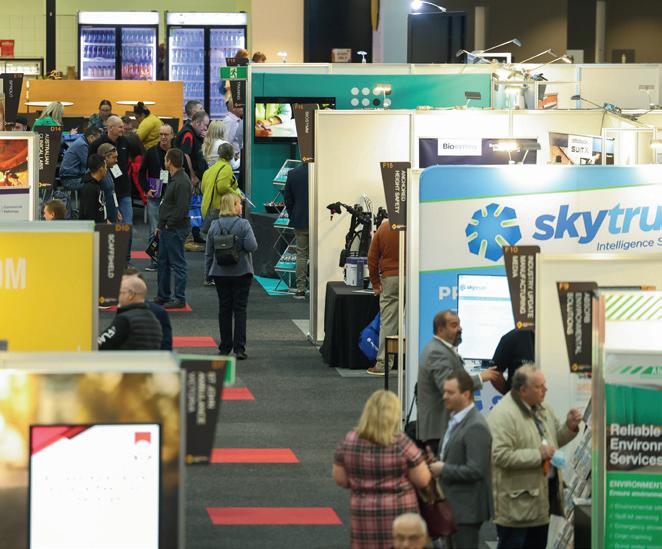

MAY 2023 - SAFETY SOLUTIONS 21 www.safetysolutions.net.au
ABSORB ENVIRONMENTAL SOLUTIONS D12 ADAPTALIFT GROUP F05 AESC B29 ALCOLIZER TECHNOLOGY B27 ALL PREPARATION EQUIPMENT D28 ALPHA FIRST AID G15 ANCHOR SAFE H06 A-SAFE AUSTRALASIA PTY LTD C30 ASCOM G29 AUSTRALIAN FORKLIFT & INDUSTRIAL TRUCK ASSOCIATION D02, E06 AUSTRALIAN INSTITUTE OF HEALTH & SAFETY E14 AUSTRALIAN SECURITY TECHNOLOGY C24 AUTOMATION SYSTEMS & CONTROLS E08 BEAVER TECHNOLOGY SERVICES F02 BIOSYMM G27 BREATHALYSER SALES & SERVICES C05 BS BOXES D24 BUSINESS CHAMBER QUEENSLAND F13 CENTRE FOR WORK HEALTH & SAFETY C13 CEREBRAL PALSY ALLIANCE E33 CIRLOCK F16 CLEAN STREAM TECHNOLOGIES C34 CM3 CONTRACTOR MANAGEMENT PTY LTD B22 COTEWELL E23 DELTA PRO LADDER TRANSIT G20 DEXSAFE G07 DONESAFE F20 DURESS B15 EARTHMOVING EQUIPMENT AUSTRALIA C14 ECOPORTAL B19 EMONA INSTRUMENTS D30 EMP ONSITE D13 ENWARE C33 EVERYDAY MASSIVE F33 GEMONE B14 GOOD FEET AUSTRALIA A27 HEART AND BRAIN WORKS LTD B23 HIP POCKET WORKWEAR & SAFETY A29 INDUSTRY UPDATE MANUFACTURING MEDIA A07 INTEGRITY SAMPLING A08 IPAR D34 JACQUES TECHNOLOGIES C23 JB'S WEAR A30 JEA TECHNOLOGIES E24 JESI C20 JOBFIT HEALTH GROUP E37 JOINT ACTION A24 KAB SEATING E20 KALLIBR TRAINING G30 LICENCES 4 WORK G16 LIVCOR AUSTRALIA F23 MARTOR AUSTRALIA D41 MAYO HARDWARE E13 MCM ELECTRONICS D09 MEPACS C28 MILWAUKEE TOOLS AUSTRALIA C02 MY SAFE WORK A28 NATURAL COOL AIR B07 NEXTRACK C41 NOGGIN B06 NOISE MEASUREMENT SERVICES A16 OCCPHYZ F24 PACIFIC EARS AUSTRALIA PTY LTD E27 PBF AUSTRALIA F30 PLANT ASSESSOR B18 PORTWEST PACIFIC B02 PREVENTURE A20 PROTECTIVE PTY LTD D23 RISK MANAGEMENT TECHNOLOGIES B11 SAFETY CHAMPION D37 SAFETY GOVERNANCE FOUNDATION D43 SAFETY MATE C36 SAFETY SOLUTIONS A19 SC JOHNSON PROFESSIONAL G31 SCHMALZ AUSTRALIA F06 SHOWA E02 SKYTRUST D20 SONIC HEALTHPLUS E30 SPEEDGLAS F15 ST JOHN QLD G23 STAUNCH TECHNOLOGY D27 STEEL BLUE A23 TEG RISK B10 THE GLOVE COMPANY PTY LTD F12 TRU BRANDS E12 ULTIMATE LED LIGHTS C12 VERTICAL HORIZONZ G24 WORK HEALTHY AUSTRALIA E28 WORKFORCE HEALTH ASSESSORS E34 WORKING AT HEIGHT ASSOCIATION H15 WORKPLACE EMERGENCY MANAGEMENT B26 WORKPLACE HEALTH & SAFETY QUEENSLAND AND WORKCOVER QUEENSLAND A15 WORKSAFE GUARDIAN F28 WORX INDUCTIONS C08 EVENTS
was correct at the time of printing.
Information
CASE STUDY
Selecting the best respirator for the task at hand
It can be challenging for workers to wear negative pressure respirators during the entire duration of a work shift. When a person’s work rate increases, their breathing rate increases. Subsequently, the user would experience an increased resistance on both inhalation and exhalation when wearing the respirator.
Another option for workers is to use PAPRs (powered air purifying respirators), which are battery-powered fan units that draw contaminated air through the filter and deliver clean air to the facepiece worn by the user. However, different manufacturers have different flow rates. Some flow rates are greater than others and it may be therefore difficult to select the most appropriate PAPR for the task.
Focusing on these two types of respiratory protection, it can be difficult to confidently choose which will achieve optimal respiratory protection and minimise added respiratory workload for the user.
Safety Equipment Australia’s engineering team first developed a data logger in-house in the 1990s. With the technology available at the time, a first prototype was created that measured the pressure inside the mask which can be converted to flow.

The objective was to develop a device to measure the data whilst the respirator is worn and analyse it to assist in selecting respirators with inhalation and exhalation resistance that are suitable for the task. Another objective was to also determine if PAPRs supplied sufficient airflow.
With the ongoing support of mining and metal processing end users from the development stage to gathering real data testing, it was clear that a more refined version of the data logger was needed to assist end users who are required to wear respiratory protection. With today’s technology, an inconspicuous and portable version of the data logger was created using updated software and components, achieving an advanced tool to assist with the selection of respiratory protection equipment.
In 2021, the SE-RDA Respiratory Data Analyser was finally released. This portable instrument measures and logs the air pressure inside a respirator and calibrated filters while fitted to a person. The device can be used on location during normal work, continuously recording each individual breath at a rate of 50 samples per second for up to 12 hours. The recorded data is then downloaded onto the software, which in turn is converted into flow rate. As a result, the information can be used in the selection of an appropriate respirator for the work at hand for all industry types.
The SE-RDA device comes with software for use on windows PC, measuring all tasks performed during a shift — including minute volumes (averaged over entire shift or selected intervals), total volume breathed, peak inhalation flow rates and the total amount of time the respirator is worn.
Key features of the SR-RDA:
• Captures multiple breathing parameters in real time.
• Can be used to measure human breathing during any activity, even when breathing protection is not normally worn.
• Monitoring can be done on negative-pressure air-filtering respiratory protection devices (RPD), as well as PAPRs and SCBA (self-contained breathing apparatus).
• Does not affect breathing resistance or interfere with the airflow through the mask.
The SE-RDA software enables OH&S professionals to quantify:
• Minute volumes (averaged over an entire shift or selected periods).
• Total volume breathed.
• Peak inhalation flowrates for all tasks performed during the period.
• Breathing resistance (BR) and work of breathing (WoB) for various types of RPD.
• ISO Work Rate classification (W1–W4) and how the work rate varies over the period.
• The amount of time the respirator is worn during the shift.
Safety Equipment Australia Pty Ltd
www.sea.com.au
22 SAFETY SOLUTIONS - MAY 2023 www.safetysolutions.net.au
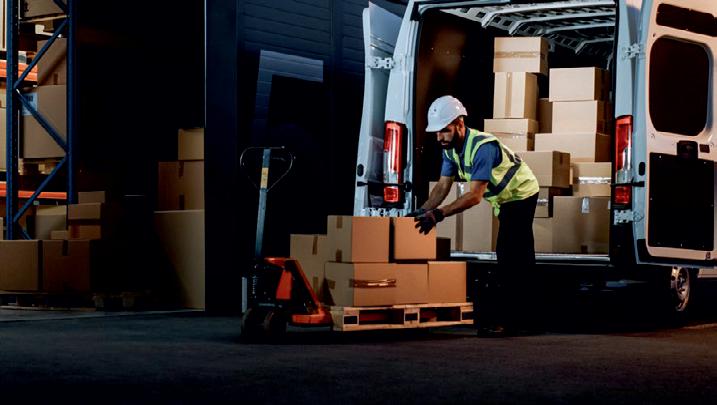

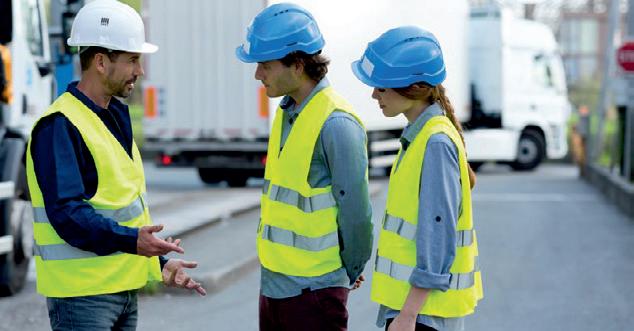




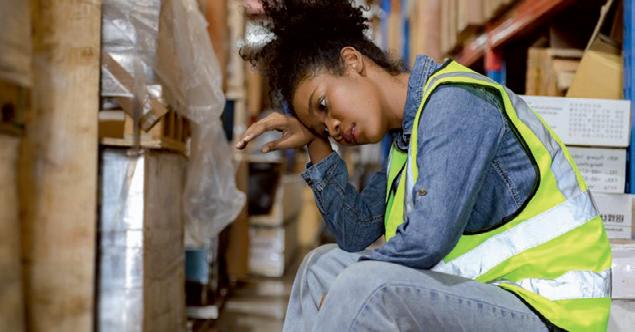


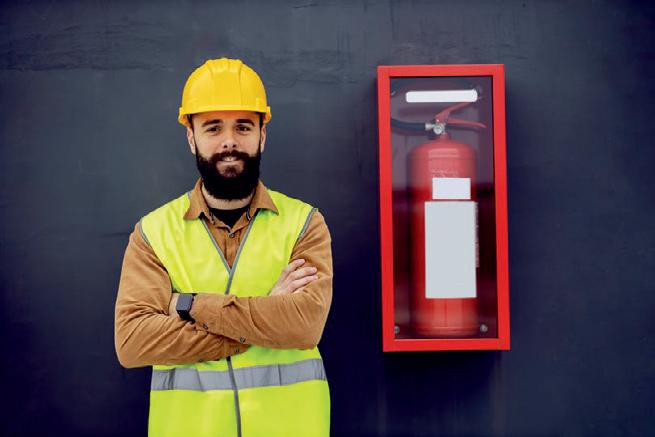



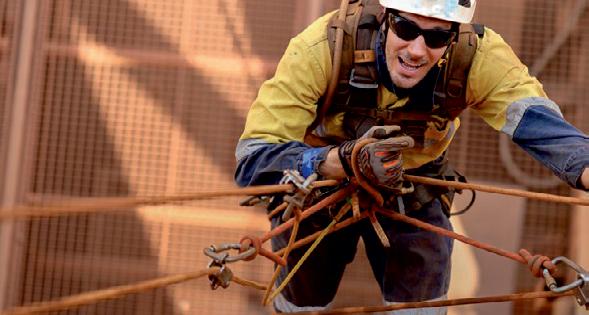


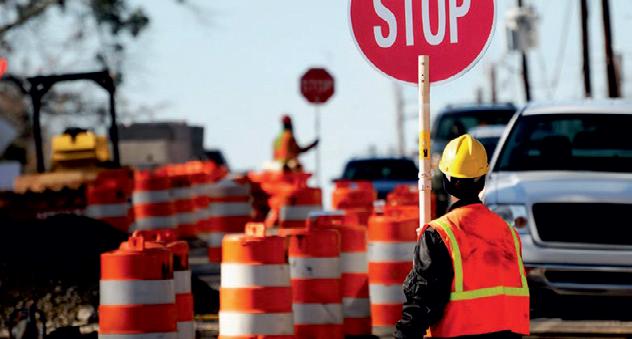



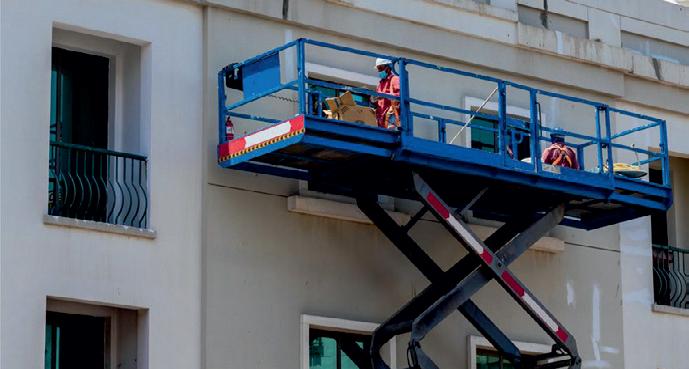


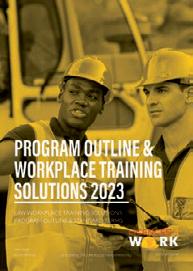


Safety glove
The Graphex Infinity safety glove is designed to provide cut resistance and dexterity for those in the electrical, mining and construction industries. The glove was developed using subatomic engineering, to create a balanced hexagonal carbon structure that provides stability and strength throughout the yarn. The glove is also thin, to perform like a second skin.
Removing hand protection to perform intricate tasks is a risk known all too well by site managers and employers. On-site workers trade cut resistance for dexterity by wearing Cut Level A or B gloves to give them the movement to perform intricate jobs. With the dexterity offered by the 21-gauge Cut Level D Graphex yarn, doffing hand protection to complete fine motor tasks is no longer required. The polyurethane grip and thin yarn provide the ability to perform these tasks while leaving the glove on.
The Graphex range of gloves is certified and backed by the BSI Group, with independent audits and regular third-party audits.

Private Brands Pty Ltd
www.privatebrands.com.au
P25 multiband portable radio
Worker safety and productivity across multiple radio networks and frequency bands can be increased with the TP9800 Multiband Portable — a versatile, lightweight and compact radio designed for maximum interoperability.
Users can connect across all bands from one dynamic portable, as the device is configurable to operate on any combination of VHF (136–174 MHz), UHF (378–520 MHz provided as a single band) and 700/800 MHz (757–870 MHz). It offers flexible and simple ordering and deployment of single, dual and multiband operation at time of purchase, or subsequently in the field using OTAP (over-the-air programming). Bands are not locked and can be reconfigured.
The product is claimed to be the lightest P25 multiband portable radio on the market with a high-capacity battery and compact design. The TP9800 with high-capacity battery weighs 382 g, while the slimline battery version weighs only 324 g. The radio will also perform in harsh working environments with glove-grip controls, water-shedding grill, IP65 and IP68 dust and water protection, shock-absorbing corner protection and MIL-STD-810G ratings.
Users can connect to the range of networks they will encounter in current operations or future technology migrations — conventional analog, P25 conventional digital, and P25 trunking Phase 1 and Phase 2 — with an integrated GNSS option for location services, Bluetooth for wireless voice accessories and Wi-Fi OTAP. Hear and be heard even in the most extreme environments, with a powerful 3 W speaker and dual microphone active noise cancellation that removes background noise in both analog and digital modes.
Tait Communications
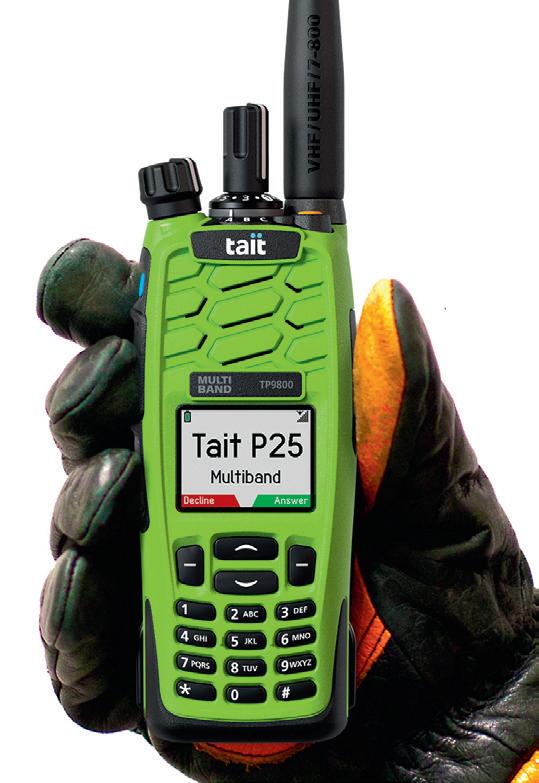
www.taitcommunications.com
Thermal imaging camera
The MSA LUNAR handheld wireless thermal imaging camera is a man-down alarm that also features F.A.S.T — exclusive assistance search technology, providing distance and directional user guidance. This innovative device introduces the concept of the collaborative search and quicker identification of the best entry point and search location when workers need help.
The device is designed to help keep a fire or emergency response crew connected when it matters most, in the most unpredictable situations.
The device can be used by every firefighter/emergency response team member on-scene, on or off the air, and is equipped with Firefighting Assisting Search Technology (F.A.S.T), edge detection enhanced thermal imaging and connectivity to provide an all-in-one safety solution.
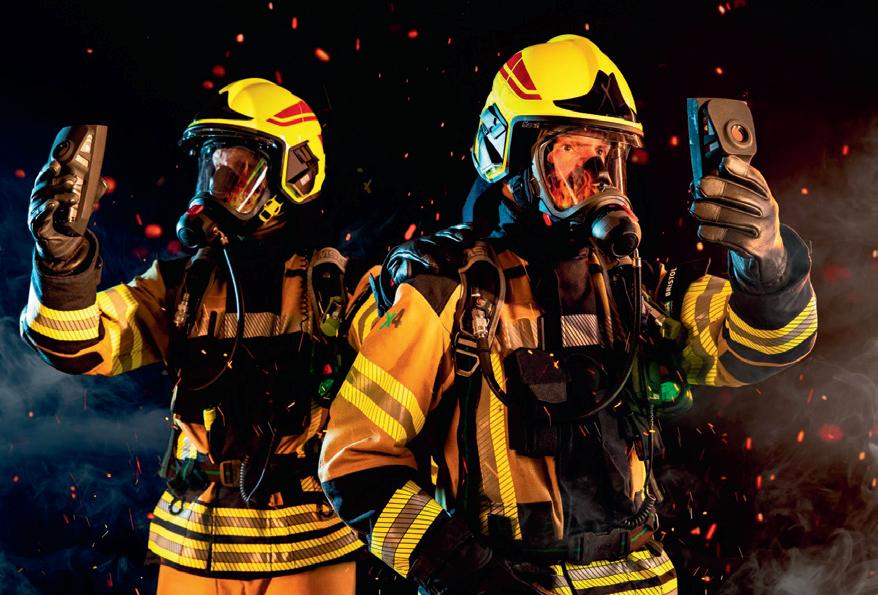
The thermal imaging camera features a LUNAR-to-LUNAR ad hoc network for connection between LUNAR devices and a manual and motion alarm.
Users may be in a region where the connectivity piece for LUNAR is not yet available, due to local communications providers not having alignments with the MSA Global partner AT&T. This means LUNAR in that region will not yet have LTE connectivity — connect to the cloud. This functionality will be available in the future.
MSA Australia Pty Ltd
au.msasafety.com
24 SAFETY SOLUTIONS - MAY 2023 www.safetysolutions.net.au
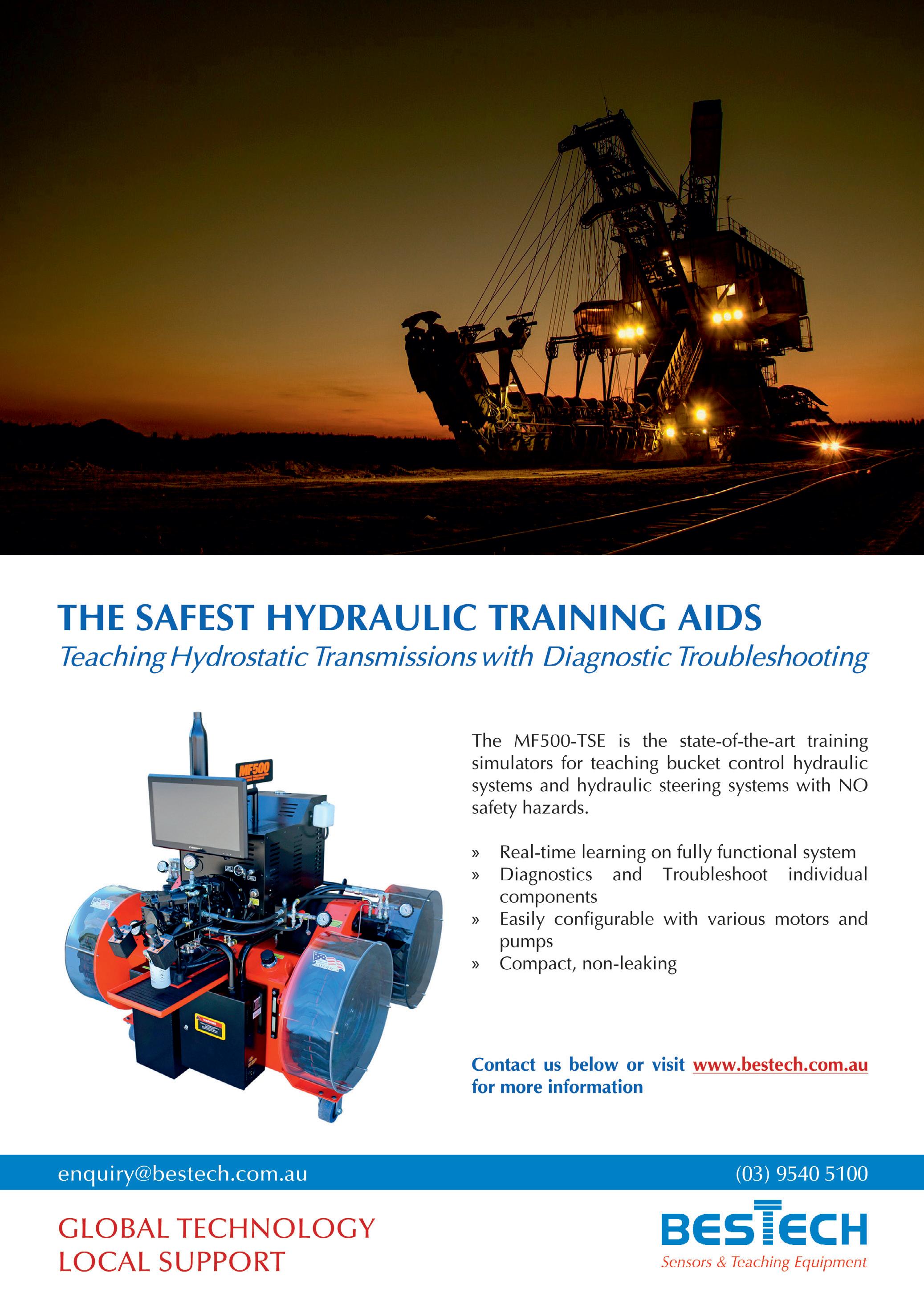
FROM PANDEMIC TO PREVENTION COMPANIES ADDRESS MANUAL HANDLING RISKS
Andrew Ronchi, CEO, dorsaVi
For the last three years, there has been a focus on reducing the impact of COVID-19 in the workplace and minimising the risk of infection — and rightly so.
From 2019 to 2020, there was a staggering 39-fold increase in respiratory cases in the US; increasing from 10,800 cases in 2019 to 428,700 cases in 2020. In 2021, respiratory cases fell 37.1% to 269,600 and forecasts indicate that this number will continue to fall as infection rates drop towards pre-COVID numbers.
In its latest report, the Occupational Safety and Health Administration (OSHA) revealed that there are currently 1850 workplace safety officers employed in the US as of July 2022. This is approximately 2.5x the numbers seen midway through 2019 and this change can be directly attributed to the changes in the workplace necessitated by COVID-19, eg, mask fit-testing, cleaning controls, rearranging workspaces to account for social distancing guidelines.

The downward trend in COVID-19 cases, combined with the recent increase in safety officers in the workforce, represents an
opportunity to make positive change in how businesses can effectively manage workplace manual handling injuries going forward.
Work-related injury and disease
Across all work industries, manual handling injuries (or body stressing injuries) represent ~37% of total workplace injuries. The shoulder and lower back are the most common offenders, making up 60–70% of total reported manual handling injuries. With business starting to return to a more normal cadence of work, it is an ideal opportunity to have a fresh look at manual handling injuries.
• What is causing them?
• What data is available to understand and profile the movements and loads contributing to the injury onset?
• What tools do safety professionals have to mitigate these injuries in the work force?
26 SAFETY SOLUTIONS - MAY 2023 www.safetysolutions.net.au
Steps to reduce manual handling injuries
There are five steps to assist in reducing manual handling injuries by 30–40% across a 12-month period.
1. Understand where to focus energy
The use of historical data, job knowledge and workers’ feedback can offer crucial insights on achieving maximum impact at the lowest cost. Historical data, in particular, can provide valuable information on injury trends by analysing injury cases over time — allowing identification of injury patterns among new and aging workers or those due to end-of-day or shift work fatigue.
Changes in productivity measures over a specified period can also be compared to injury rates, thus providing further insights. Additionally, job knowledge is vital in understanding specific taskrelated risks and may be acquired from a job dictionary or task activity assessment.
Employee feedback and engagement can provide solutions to workplace risks, often from an experienced worker who has performed the task for a long time or from a fresh perspective of a new worker. Interaction with all workers can provide invaluable clues to solve these manual handling issues and risks.
2. Measurement
What is measured, can be managed. Without quantifying employees’ work activities, organisations will often have to guess what changes need to be made. For decades, safety experts have performed workplace assessments using a clipboard, a tape measure, a camera and sometimes a force gauge.
However, the use of traditional measurement tools leaves several critical, unanswered questions.
• How often does the worker perform that task?
• How do different workers complete the same task?
• Is the worker changing the way they would usually complete the task because there is someone recording their work activity?
The answers to these questions are essential for making informed decisions and improving workplace safety and efficiency.
Digitised tools are now available and have become far more user-friendly in the last decade. Options include movement sensors, digital force gauges and muscle activity sensors (EMG) which provide insights on load and muscular exertion. More often than not, risks for injury will come from the combination of a number of factors, and occur over an undetermined time period.
3. Make decisions based on data, not opinions
At the higher level of business, board members seek data that they can rely on — financial figures, injury data, productivity statistics and macroeconomic factors. Businesses will push for timely and accurate information to inform their decision-making. They now have the same opportunity when it comes to manual handling injuries.
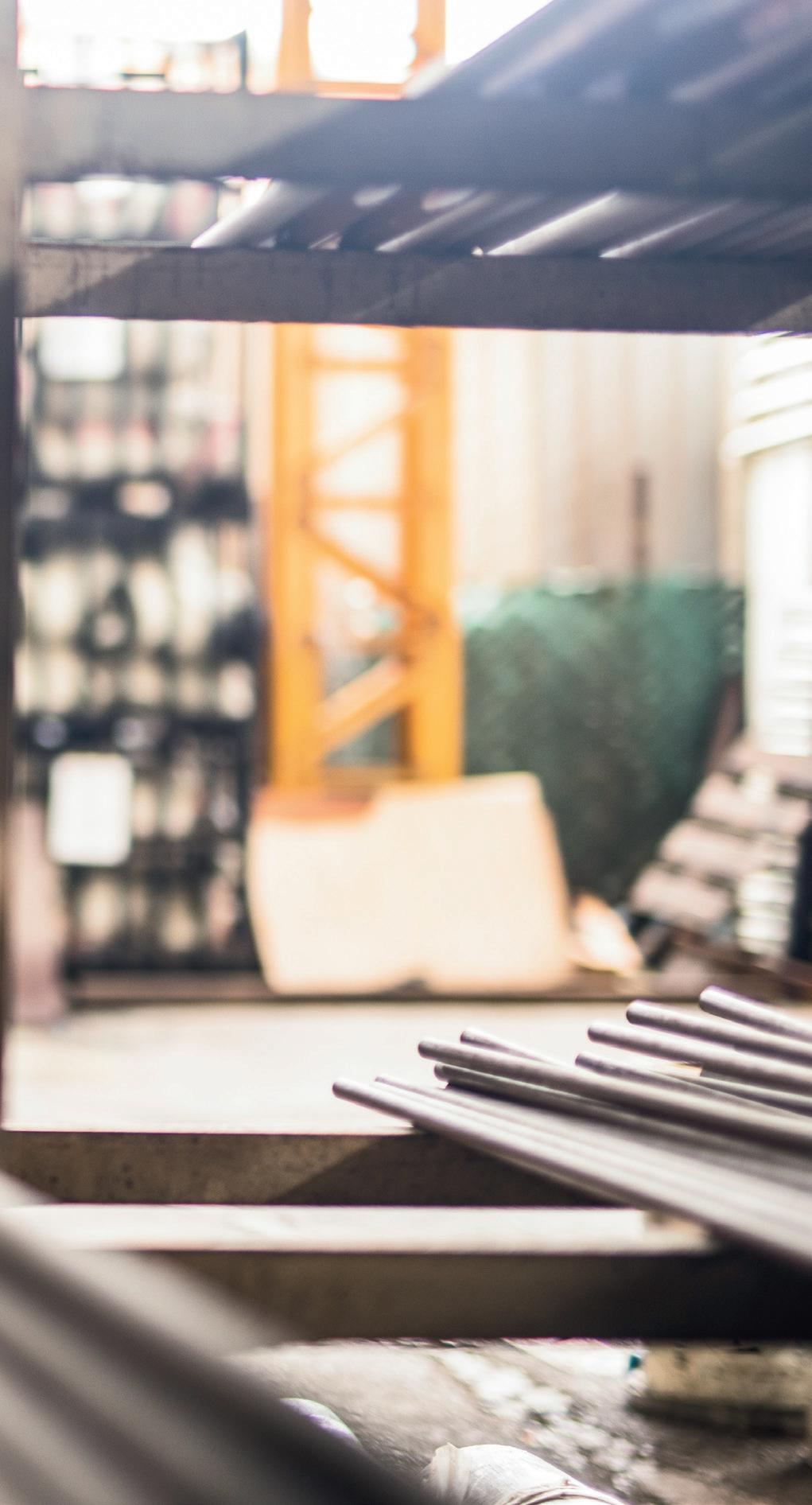
Access to data-gathering tools is now more accessible than ever and will help to capture data on workers’ movements and load to inform decisions on what to change, modify, eradicate or fine-tune. This puts organisations in a powerful position. By using the latest technology to inform decision-making, they can both keep workers safe and supply these groundbreaking insights to senior management and executive teams.
4. Test potential solutions using data to inform best practice
Once accurate baseline data has been captured, this acts as the standard or base case against which each proposed intervention can be compared. In this way, organisations can test various potential solutions, iterate them as they choose, and keep comparing the data back to the original base case.
Being able to capture movement, muscle activity, video, heart rate, impact and vibration data over a worker’s full shift, enables an assessment of the worker’s exertion and cumulative movements, and provides insights on productivity. It is essential to understand the impact on productivity to ensure the solution can be embraced by all levels of the organisation.
5. Implement the solution
The implementation of a chosen solution is a critical step, and many projects may fail at this final hurdle. There should be a thorough and well-informed implementation plan scheduled on a realistic timeframe, with measurable touchpoints to ensure the efficacy of the program. This may even require a project manager, an ambassador to engage with workers, and an easily accessible FAQ for workers to use when required. The implementation part of the project will also need to be adequately budgeted, with relevant documentation updated and key staff trained adequately on the solution to be implemented.
dorsaVi manufactures wearable sensors to monitor and prevent workplace MSD injuries.
dorsaVi Pty Ltd
www.dorsavi.com/visafe
MAY 2023 - SAFETY SOLUTIONS 27 www.safetysolutions.net.au MANUAL HANDLING
iStock.com/im
-
Weixiang
Zeitgeist Photos
Automated guided vehicles boost warehouse safety
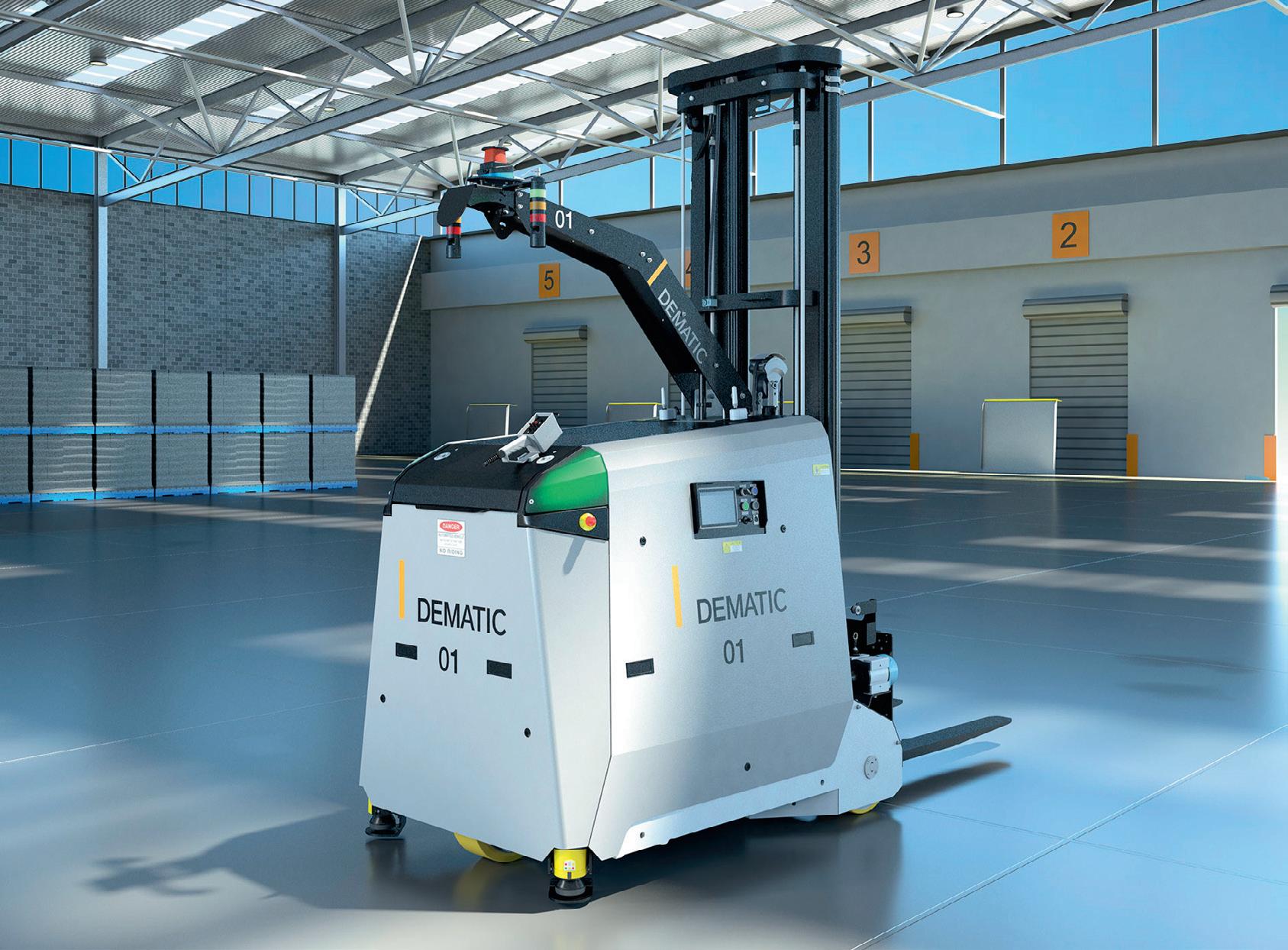
A contract bottling company has deployed Dematic automated guided vehicles (AGVs) to assist with improving safety and efficiency at its South Australian facility.
Vinpac International bottles over 10 million 9-litre cases annually and distributes to over 500 customers in the Australian wine industry and beyond, operating out of the Barossa and McLaren Vale wine regions.
To assist in its production, the company has rolled out selfcharging Dematic Counterbalance AGVs, which are designed to increase efficiency, productivity, accuracy and safety in manufacturing and distribution centres. The vehicles offer highprecision laser guidance and the latest safety scanner technology, thereby minimising mistakes and workplace accidents — which provides significant improvements in occupational health and safety standards.
The AGVs are capable of lifting loads of up to 1500 kg to a height of four metres. They are powered by high amp hour, maintenancefree batteries and can drive themselves onto charging floor plates at times of inactivity for battery top-up as required. The design of the AGVs means they can withstand the typically challenging environment of a warehouse, all while providing a 360° safety field of protection.
For maximum safety in an environment where there are personnel and other material-handling equipment, the AGVs have three obstruction sensors. These sensors are designed to identify any unexpected object within the scanner’s horizontal sensing plane. The obstruction sensor has two sensor fields — one protection field and one warning field. When an obstacle is detected in the warning field, which is longer and wider than the protection field, the vehicle will slow down to below normal walking pace. When an object is detected in the protection field, the safety PLC will trigger an emergency stop within the AGV and it will remain stopped until the obstruction is cleared.
The AGVs also have four emergency-stop buttons, with one in each corner of the AGVs. Once pushed, they trigger an emergency stop in the vehicle until it is released manually, and the reset button is pressed.
“The safety of our team is paramount, so the deployment of these AGVs will help to enhance the working environment for our valued team members and will deliver the best level of service possible to our customers,” said Andrew Holdback, Group Operations Manager at Vinpac International.
Dematic Pty Ltd www.dematic.com.au
28 SAFETY SOLUTIONS - MAY 2023 www.safetysolutions.net.au CASE STUDY
Don’t settle for ordinary. Go Rogue. Be different. Engineered from Graphex 18-gauge yarn, to create the world’s thinnest, lightest, and most comfortable Cut Level F certified glove with additional thermoplastic rubber impact protection and a short wrist to provide uncompromised movement. This is going rogue. This is extraordinary. This is Graphex® Rogue


18 Gauge Cut Level F Scan to request a sample CE 719275 Australian Standard AS/NZS 2161.2:2020 AS/NZS 2161.3:2020 Lic. BMP 760806 4X42FP EN 388:2016 600 GFPR Graphex® Rogue X1XXXX EN 407:2020
SAFE 3D ENVIRONMENT PERCEPTION OPENS UP NEW DIMENSIONS
With the world’s first 3D time-of-flight camera with performance level c safety certification, SICK is opening a new dimension in safety technology. safeVisionary2 allows safe three-dimensional environment perception that you can use to increase the safety and efficiency of your applications. Thanks to the precise measurement data, the camera also reliably solves automation tasks, thus eliminating the need for you to purchase additional hardware components. safeVisionary2 has a compact, rugged design and is versatile and reliable when used for everyday industrial tasks.
Increasing safety, raising productivity
Collision protection for mobile robots
With safeVisionary2, your mobile robots can also detect obstacles above the protective field of a safety laser scanner. This increases the safety and availability of your vehicles.
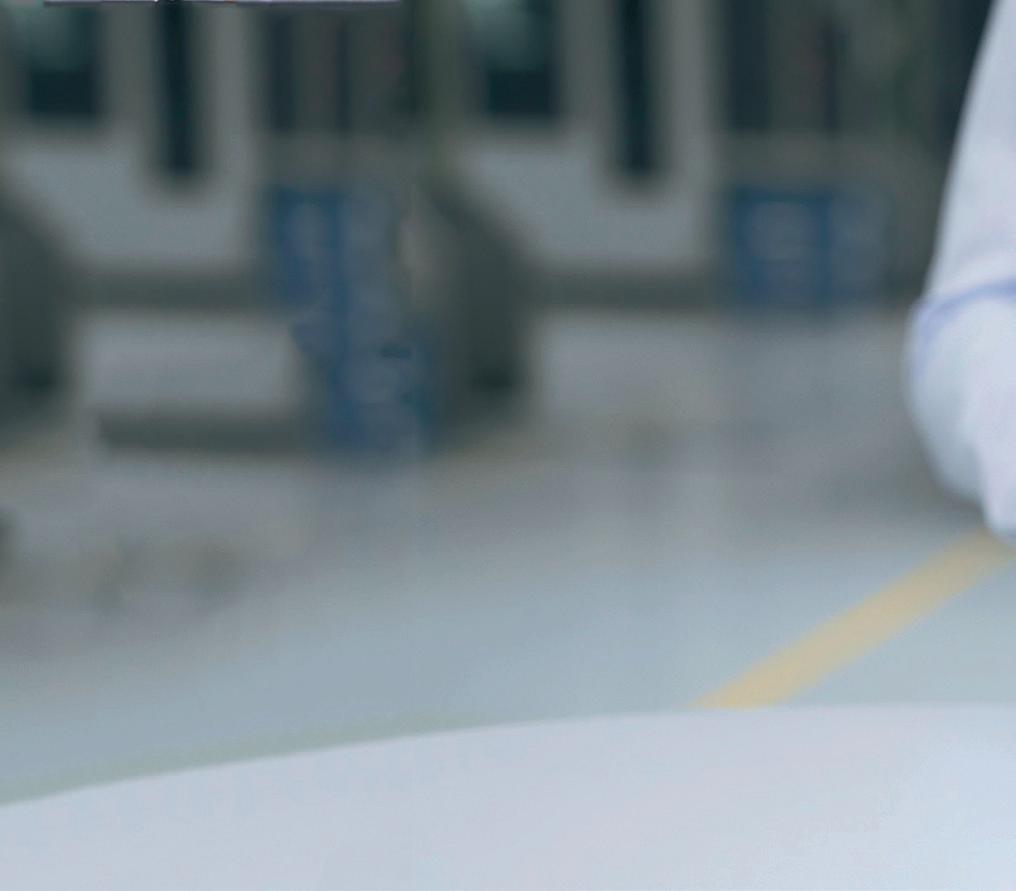
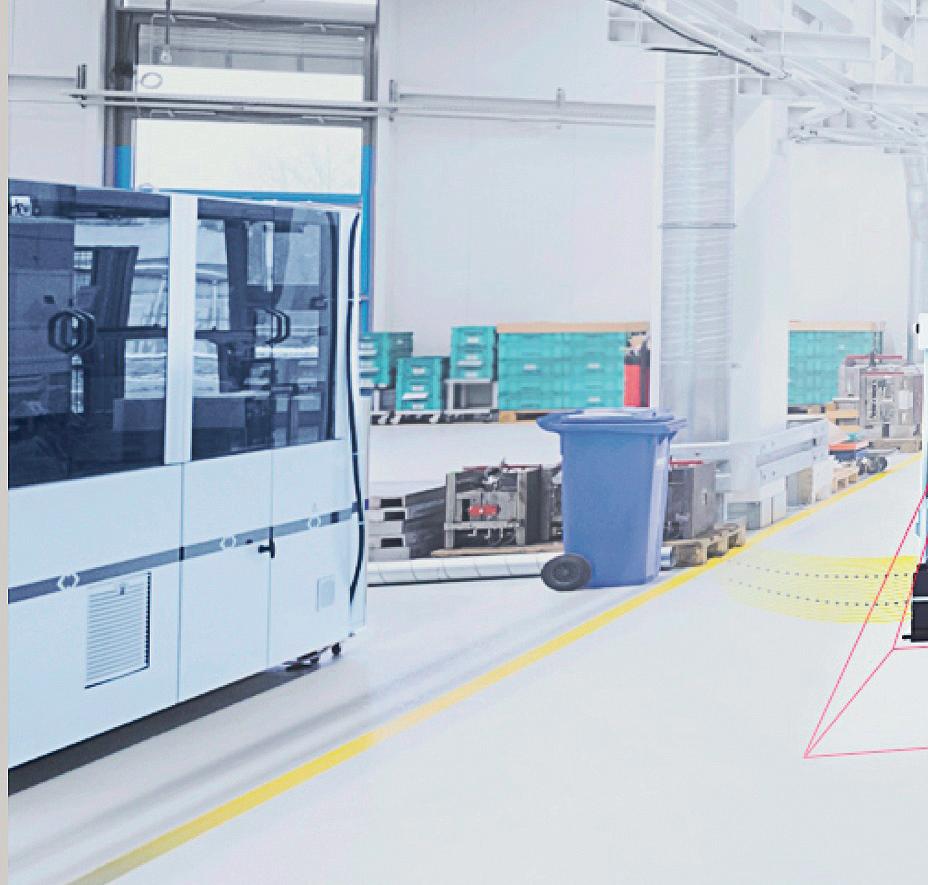
3D protective field for collaborative robots
safeVisionary2 safely detects residual risks such as a person leaning or reaching over. This means the camera enables true collaboration with fewer stops and reduced safety distances.
Fall protection for service robots
Thanks to safeVisionary2, your service robots also register falling hazards such as stairs. With two cameras, performance level d required by IEC 63327-2021 can be achieved for this function.
More productivity thanks to safe 3D environment perception
safeVisionary2 is more than just a safety camera sensor. In addition to the safety functions, the camera offers precise 3D measurement data that can also be used in a variety of ways.
Precise 3D information
At 30 images per second and a resolution of 512 x 424 pixels, the camera delivers reliable intensity and distance values even in dynamic applications.
Fast data transmission via Gigabit Ethernet
You benefit from fast data transmission thanks to Gigabit Ethernet as well as short response times for high safety.
More than just a safety sensor
You can also use the 3D measurement data for automation tasks, such as for vehicle navigation or object detection.
The camera that unites safety and automation
safeVisionary2 has a compact design and is reliable and versatile in everyday industrial use. You also benefit from a
30 SAFETY SOLUTIONS - MAY 2023 www.safetysolutions.net.au SPONSORED CONTENT
high level of user-friendliness and save time during installation and configuration.
With the compact dimensions, safeVisionary2 has a clear advantage compared to many other sensors. This allows you to easily integrate the camera into your machine design, and it also fits in tight installation spaces. It is resistant to shocks and vibration — for high availability in mobile applications. With the help of mounting brackets, standardized connection technology and the Safety Designer software, safeVisionary2 can be put into operation quickly.
Intuitive configuration software
The versatile Safety Designer software makes it easy to configure your safety application. The implementation and use of safety and diagnostic functions is just as easy as usual.
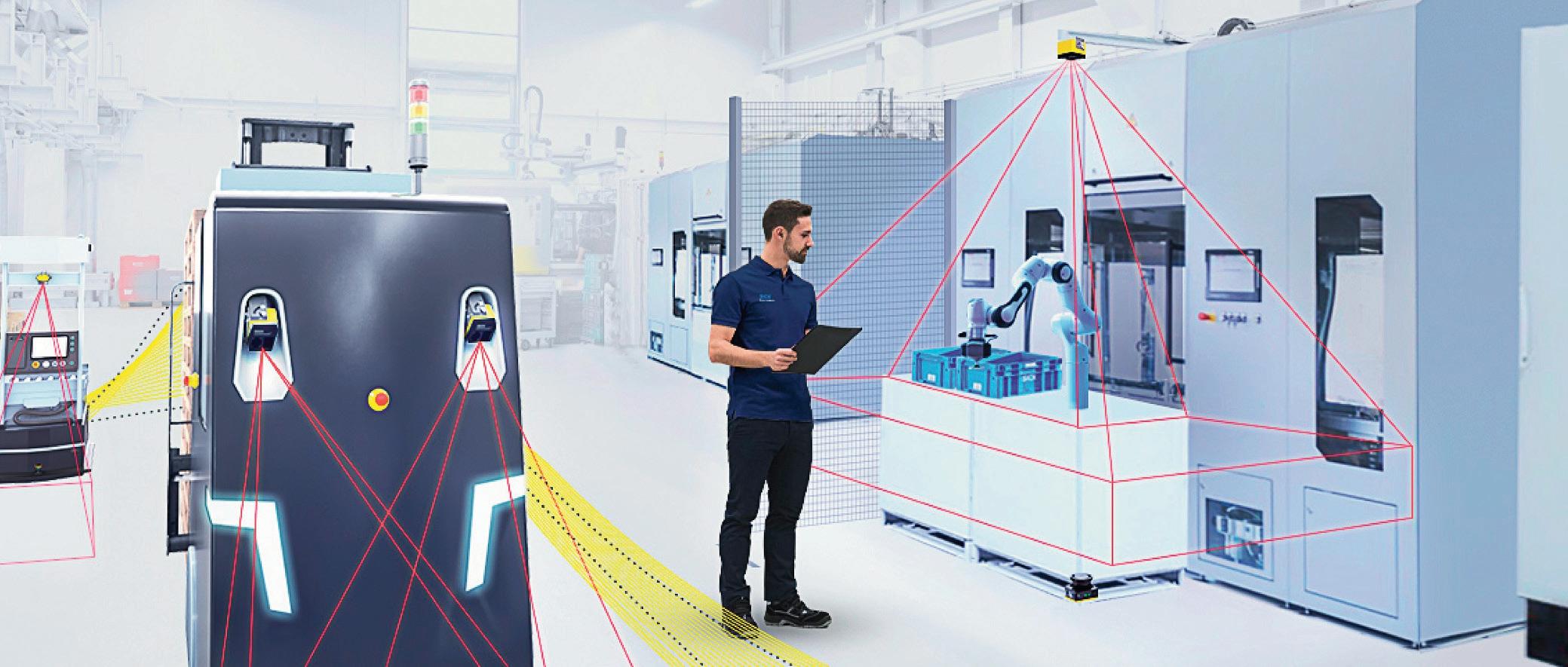
Simple protective field configuration
Drawing 3D protective fields is very simple. Applications and functions such as the integrated protective field evaluation take on a new meaning with safeVisionary2.
Integrated diagnostic functions
Use real-time visualization and diagnostic functions to quickly troubleshoot and optimize your application.
Get the job done with one tool
With Safety Designer, you configure your entire safety application, from individual sensors to logic, and also get detailed documentation.
Time- and cost-saving configuration and diagnostics

Fields of applications
• Safe collision avoidance and lateral protection for mobile robots and AGVs
• Protects personnel from leaning over into the hazardous area of collaborative robots
• Fall protection for mobile service and healthcare robots, e.g., cleaning robots
MAY 2023 - SAFETY SOLUTIONS 31 www.safetysolutions.net.au SICK Pty Ltd www.sick.com.au
Calibration gas solutions

CAC Gas & Instrumentation provides specialty gas products for gas detection, process gas analysis, environmental monitoring and laboratory gas analysis applications.
Specialty gas mixtures are sourced globally, providing reference, certified, EPA, ISO 17034 and ISO 17025 gas mixtures for users’ technical requirements. CAC Gas produces simple binary mixtures through to complex multi-component gas mixtures in a range of cylinder sizes. Non-refillable (low-volume) cylinders, high-pressure (large-volume) cylinders and lowpressure cylinders are available in a variety of sizes.
All valve types are available including AS, BS, CGA and DIN as required. Gases are supplied with a certificate of composition. Cylinders are labelled with the gas volume, pressure, the company’s reference, date of manufacture and shelf life.
CAC Gas supplies gas generators, mixers, calibrators along with a complete gas control product range including regulators, outlet panel, manifolds and gas distribution systems.
With stock holdings in Sydney and Singapore, next-day dispatch of in stock items, private customer branding and same-day customer response, CAC Gas provides customers with high-quality customer service, stocking and product solutions.
CAC Gas & Instrumentation
www.cacgas.com.au
Battery storage system
Tesvolt has launched the TS HV 30–80 E battery storage systems, offering a range of options for variation and a 10-year guarantee for system and performance. The products are designed for the needs of commercial enterprises — from small bakeries to large manufacturing companies — and allow for high levels of safety and durability. From system configuration and commissioning to after-sales support, installers have full digital access to all services.
The range consists of the TS HV 30 E, the TS HV 50 E and the TS HV 80 E. The efficient, high-voltage storage units are easily scalable; combined, they achieve total energy of up to 5 MWh. The three energy storage systems also incorporate advanced Tesvolt battery modules, each with 22 Samsung SDI cells. The high energy density of the battery cells makes these storage systems especially economical.
The three storage units will be certified by TÜV Rheinland for functional safety, among other things, making them among the safest on the market. These high safety levels are driven partly by the design of the battery cells: prismatic cells are considered to be among the safest lithium-ion cells. At a system level, the battery management system monitors the voltage of each individual cell. The whole system is therefore subject to constant plausibility monitoring. In case the normalised range is exceeded, the system automatically switches to a safe state.

Features include the Sunny Tripower Storage X three-phase battery inverter from SMA, which provides fast reaction and control times as well as a broad usable DC voltage range. The energy storage systems can be combined with two different energy management systems: the Basic or Pro model.
Tesvolt Australia
www.tesvolt.com.au
Solar cleaning robot
Solar panel maintenance company
Solar Shine Australia has partnered with Solar Cleano to bring its F1 solar cleaning robot to the Sydney market.
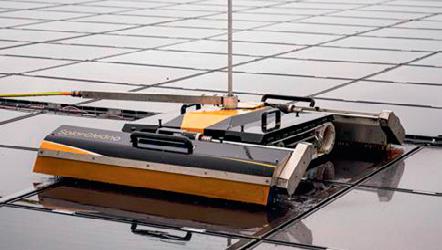
Built in Luxembourg, the robot is designed to overcome the challenges faced when cleaning large commercial and ground-mount solar systems.
The robot can improve safety as it can remove the need for personnel to be in high-risk environments.
Suitable for wet and dry solar panel cleaning, the robot can easily cross gaps up to 70 cm and provides a fast, consistent clean. Its specialised pads can clean at a 25° angle with water.
Solar Shine Australia
solarshineaustralia.com
32 SAFETY SOLUTIONS - MAY 2023 www.safetysolutions.net.au
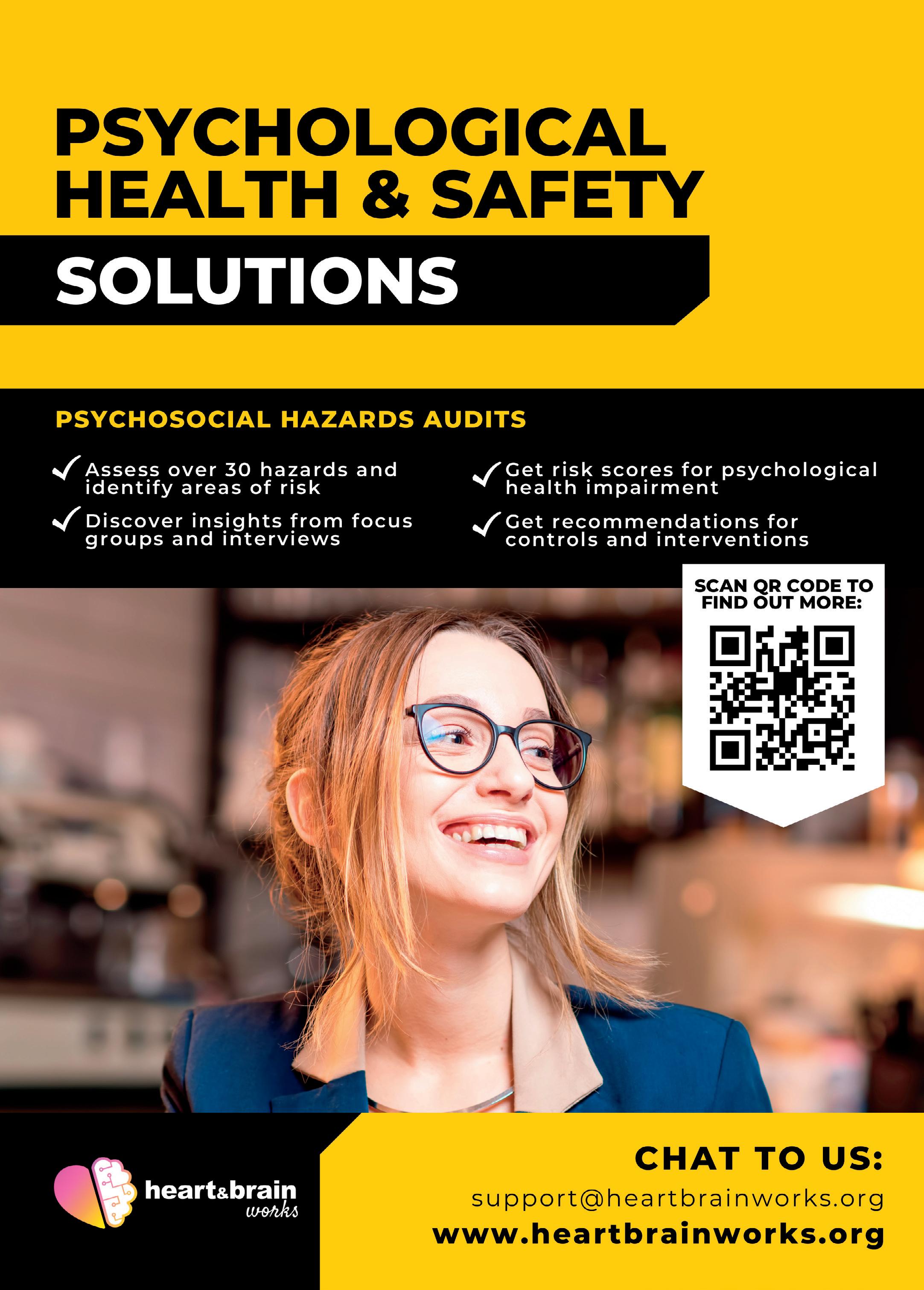
Real-time air monitor
Technology innovator Trolex, in collaboration with the NSW Government’s Centre for Work Health and Safety, has created the Air XS air monitor to detect and monitor silica dust in real time. The NSW Government invested $1.3 million over three years to support the research and development needed to bring the innovative air monitor to market. It is just one initiative of the NSW Dust Strategy 2020–22 to tackle dust diseases that include silicosis and asbestosis.
Previously, the only way to know if workers were exposed to dangerous levels of silica was to send air samples to a lab and wait for days or weeks for results. The Air XS’s ability to detect dangerous levels of respirable crystalline silica in real time should have a genuine impact on protecting workers from silicosis. The device provides an alert when silica levels are high, allowing workers, safety representatives and managers to respond instantly to changing levels of dangerous particulates.
Trolex trolex.com
Automated technologies for palletising
MHM Automation has released the MHM Automated Mobile Robots (AMRs) and the H&C Gantry Palletiser and De-Palletiser.

The AMR is an automated vehicle which moves product on pallets or in crates, without the need for conveyors. Integrated navigation and vision technology enables the AMR to navigate and move safely around people and objects, making it suitable for congested production environments where automation would previously not have been possible. AMRs’ ability to work together as a fleet mean they are a scalable solution that can be used for operations large and small.
The H&C Gantry Palletiser and De-Palletiser (SimPal50) is capable of palletising or de-palletising up to eight boxes or bags per minute, an alternative to a robotic palletiser. The SimPal50 features MHM’s proprietary vision system, which enables it to identify and de-palletise boxes in a randomly stacked pattern. It reduces labour, allowing staff to be redeployed to higher value work and helps reduce the risk of injury through manual handling.
MHM Automation mhmautomation.com
Personal gas detector
Blackline Safety Corp has launched a connected wearable that is designed to transform single-gas detection. The G6 personal gas detector offers fast incident response time and an efficient way to manage safety and compliance. The gas detector provides longlasting connectivity that enables industrial organisations to harness real-time safety data in scenarios where disposable, traditional beep-and-flash detectors are commonly used.
A fully connected and intuitive solution that leverages Internet of Things (IoT) cellular connectivity, the personal gas detector delivers expanded benefits such as longer battery life, lower cost of ownership and fewer false alarms. It also provides access to data needed to manage safety protocols, processors and ongoing compliance effectively and efficiently.
The personal gas detector features direct-to-cloud cellular connectivity that is designed to work straight out of the box and complete safety management through the Blackline Live software portal, with the ability to view an entire fleet of devices from a single screen and deliver automatic, over-the-air firmware and configuration updates. It also supports an improved incident response time through real-time notifications and GPS mapping to locate workers and devices and understand what’s happening on the ground as incidents unfold.
It also features sensor options to alert workers to exposure of toxic gases, including hydrogen sulfide (H 2S), carbon monoxide (CO), oxygen (O2) and sulfur dioxide (SO2). The personal gas detector provides higher precision short-term exposure limit (STEL) monitoring, along with accurate data that reduces false alarms and drives reporting and analytics to get ahead of safety risks. The device has a long-life rechargeable battery that is designed to last up to one year, with a device life of up to four years. It can also locate devices when lost or stolen.
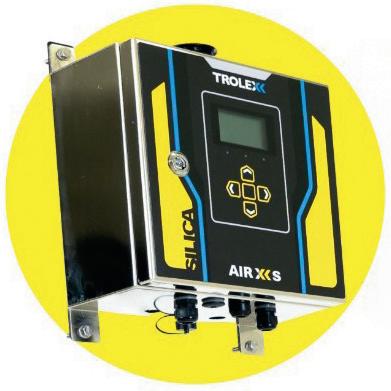
Suitable for large industrial organisations in the oil and gas, petrochemical, manufacturing, utility, and renewable energy sectors, the personal gas detector allows users to access single-source data from anywhere, at any time, on any Web-enabled device, and analyse it through Blackline’s reporting, visualising and data analytics software. This enables safety managers to glean data insights to stay ahead of potential risks. The G6 comes with a full warranty and flexible purchase options.
Blackline Safety
www.blacklines.com
34 SAFETY SOLUTIONS - MAY 2023 www.safetysolutions.net.au
Vibration analyser

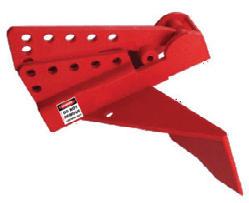

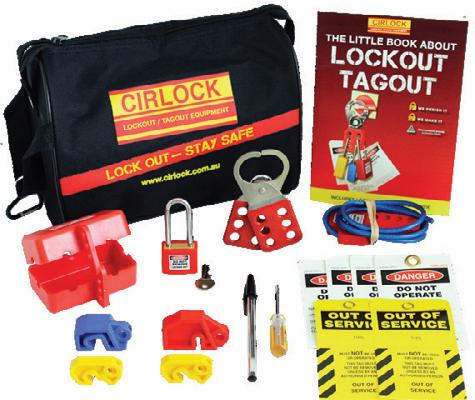


The MMF VM100A vibration analyser is designed for measuring human response to vibrations such as hand-arm vibration and comfort evaluation in whole-body vibration. It can also be used for condition monitoring of industrial machinery or serve as a vibration meter and frequency analyser for other applications that require single or tri-axial vibration data. This system comes with a large, touch-screen interface for user guidance and operation.
The main purpose of measuring human vibration is the prevention of health risks and the evaluation of comfort. The human body vibration meter provides both hand-arm measurement according to ISO5349 and ISO/TR 18570 and whole-body vibration measurement according to ISO2631 for health and comfort evaluation at the workplace. Daily vibration monitoring with this meter can determine if employees are exposed to health risk from excessive vibration from machinery.
The vibration meter can also detect and identify TEDS-capable sensors to enable multi-channel tests where the sensors communicate their calibration value, model number, serial number and other specifications to be used by the data acquisition system.

With up to nine independent measuring channels, the collected data can be displayed as interval, running or maximum RMS, as well as vibration dose value (VDV), main frequency, peak and crest. The acceleration can also be displayed as an FTT with waterfall mode. The internal flash memory of the vibration meter can store up to 10,000 measurements, each with date, time and a comment. The measured data can also be easily transferred to a PC via the USB 3.0 interface. Bestech Australia Pty Ltd www.bestech.com.au
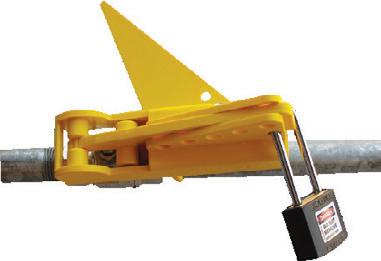

MAY 2023 - SAFETY SOLUTIONS 35 www.safetysolutions.net.au
Mobile safety app
The Workforce by Avetta mobile app offers digital ID cards that empower workers to use their smartphones to take LMS training, become compliant and access worksites securely.
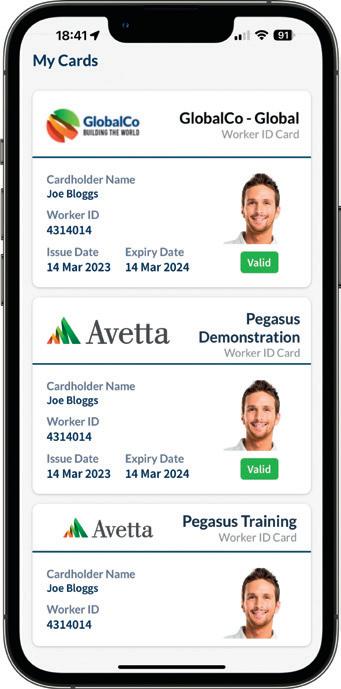
Using the app, workers can immediately get onsite to be safe and productive. They can check their requirements, roles and training needed for specific sites, and projects in the app. In addition, they no longer need to carry different worker ID cards, because the app’s Worker ID Wallet stores all cards on the same device and in the same app, conveniently accessible any time.
Workers can also check whether they meet the site access requirements at home or on the go, before they travel to site. Non-compliance can be remedied before arriving at the gate. The app offers enhanced security, because workers need to activate the app using two-factor authentication — meaning only invited and authenticated workers use the app and access sites.
While Workforce by Avetta supports QR code check-in technology, QR codes can create security concerns because they do not require additional authentication methods, such as passwords or biometric scans. This means they are easy to steal, borrow, replicate, share or forge, leading to unqualified and non-compliant workers getting access to dangerous worksites.
By contrast, BLE Bluetooth access technology delivers encrypted, short-range communications which require the worker and device to be in proximity, with multifactor authentication using techniques like passwords, biometrics and digital certificates. Avetta
www.avetta.com
Access permission key
Hand cream and moisturiser
The DU’IT Tough Hands hand cream and moisturiser is suitable for those in a range of industries, including carpentry, agriculture, demolition, concreting and bricklaying. Tough Hands is designed to help soothe chronically dry, rough, cracked, irritated and calloused hands, working to seal cracks, replace lost oils, condition the skin and form a protective barrier to keep hands in good condition.
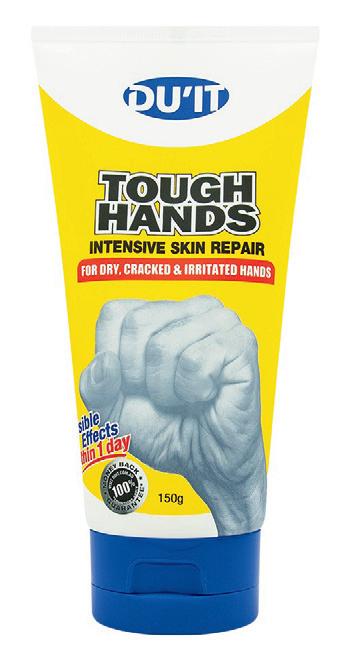
The hand cream and moisturiser includes urea (10%), a natural skin conditioner that maintains skin moisture and seals cracked skin; vitamin E to promote skin healing, replenish moisture and rehydrate stressed hands; and natural AHAs, to gently exfoliate and remove dead skin.
It also includes dimethicone, which acts as a protective coating that shields skin with a non-greasy protective barrier which counteracts the loss of vital oils that leads to cracking and drying of skin. Sodium PCA acts in synergy with the urea and holds moisture in the skin, while lemon myrtle and tea tree are also included in the moisturiser, as antimicrobial agents used to treat minor cuts and mild infections.
DU'IT Skincare
www.duit.com.au
The coded safety switch PSENcode key only allows authorised persons to access machine functions and prevents the machine restarting. It is designed as an alternative to the more comprehensive solution with the pushbutton unit PITgatebox and integrated PITreader.
A PSENcode key is the symbiosis of Pilz’s PITreader actuator and its non-contact safety switch PSENcode. It enables safe solutions up to PLe and SIL3.

Two applications are possible with the PSENcode key, thanks to its key lock principle. Firstly, if the employee has the key, he or she receives the machine enable that’s tailored to their individual task and can enable operating modes. Secondly, if the key is on the machine, the employee can remove the key, so preventing the machine from starting unintentionally.
The safety switch is used for position monitoring and monitoring the position of guards in accordance with EN 60947-5-3. It comes with integrated evaluation and standard interfaces and is thus open to products from other manufacturers. This makes the coded safety switch suitable for a user’s environment and an upgrade to a plant.
It can be combined with safety device diagnostics which are designed to avoid service callouts and reduce downtimes.
Features of the coded safety switch include: mode of operation: RFID transponder technology (non-magnetic action principle); diagnostic interface: 3 LEDs; designs: narrow, compact or large; outputs: 2 safety outputs; inputs: 2 safety inputs; protection type: IP67/IPK69K; coding of PSENcode for safety gate monitoring: coded, fully coded, uniquely fully coded; and coding of PSENcode for position monitoring: coded.
Pilz Australia Industrial Automation LP www.pilz.com.au
36 SAFETY SOLUTIONS - MAY 2023 www.safetysolutions.net.au
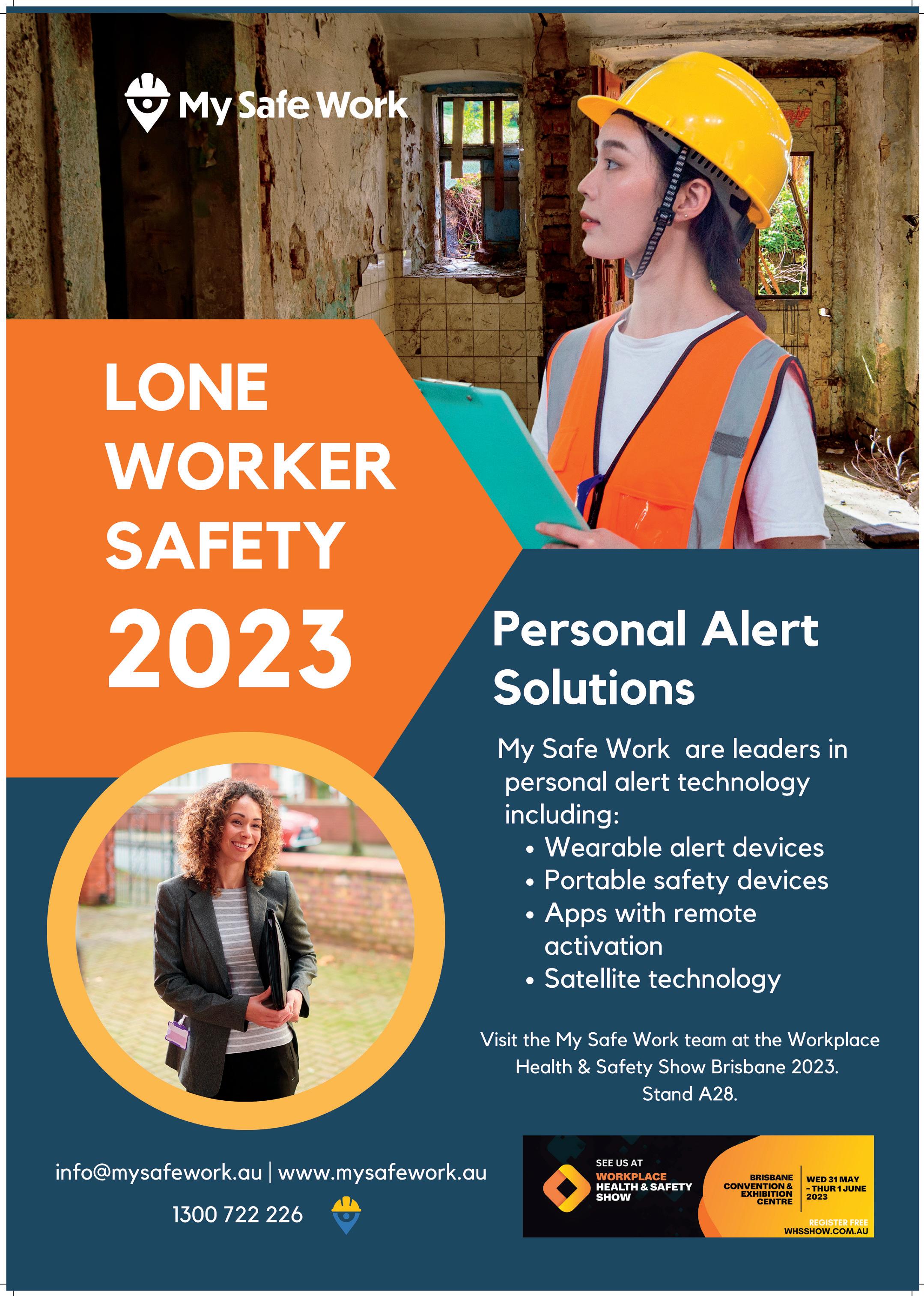
VR training lab boosts workplace safety
Westwick-Farrow Media
A.B.N. 22 152 305 336 www.wfmedia.com.au
Head Office: Unit 7, 6–8 Byfield Street, (Locked Bag 2226) North Ryde BC NSW 1670, AUSTRALIA
Ph: +61 2 9168 2500
Editor: Amy Steed ss@wfmedia.com.au
Assistant Editor: Ashna Mehta
Acting Publishing Director/MD: Janice Williams
Art Director/Production Manager: Julie Wright
Art/Production: Linda Klobusiak, Marija Tutkovska
Circulation: Dianna Alberry circulation@wfmedia.com.au
Copy Control: Mitchie Mullins copy@wfmedia.com.au
Industrial Sales: Candice Stannard Ph: 0467 000 147 cstannard@wfmedia.com.au
A new virtual reality training lab for the resources industry has been opened in Mackay, providing more diverse training options for workers.
The Queensland Government committed an extra $5.7 million in funding to expand the Resources Centre of Excellence to support emerging industry needs.
Developed by Next World Enterprises, the virtual reality training software provides immersive scenarios to help participants understand the high-risk environment and potential hazards, without compromising their safety.

“Our training accelerates the learning curve for users so business can upskill workers faster for the needs of future industry,” said Michael O’Reilly, CEO and Founder, Next World Enterprises.
“We’ve designed our cutting-edge virtual reality software to enhance the learner’s engagement and foster a deep comprehension of the training topic.
“It is also a win for business, as it increases productivity and minimises downtime due to injury from ineffective training.”
The Resources Centre of Excellence opened in mid-2020 and provides training options for students and apprentices as well as supporting companies to develop new products and research.
The state government provided half of the original $7 million funding to build the centre in partnership with Mackay Regional Council.
In addition to the virtual reality training lab, the centre contains a 6800 m2 underground simulator mining facility that replicates the physical conditions of working underground.
“This new VR lab will help equip our resources workers with the skills and knowledge they need to succeed well into the future — and most importantly keep them safe,” said member for Mackay Julieanne Gilbert.
If you have any queries regarding our privacy policy please email privacy@wfmedia.com.au
ISSN 1447-8277
PP 100007391
All material published in this magazine is published in good faith and every care is taken to accurately relay information provided to us. Readers are advised by the publishers to ensure that all necessary safety devices and precautions are installed and safe working procedures adopted before the use of any equipment found or purchased through the information we provide. Further, all performance criteria was provided by the representative company concerned and any dispute should be referred to them. Information indicating that products are made in Australia or New Zealand is supplied by the source company. Westwick-Farrow Pty Ltd does not quantify the amount of local content or the accuracy of the statement made by the source.
38 SAFETY SOLUTIONS - MAY 2023 www.safetysolutions.net.au CASE STUDY
Printed and bound by Bluestar
iStock.com/kacin Phonsawat
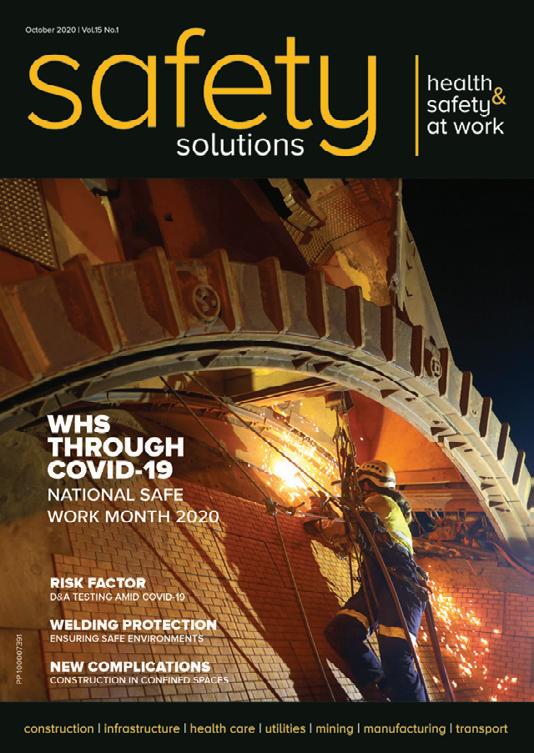
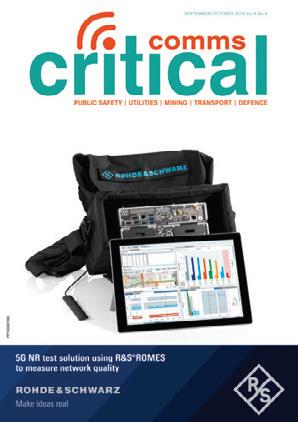
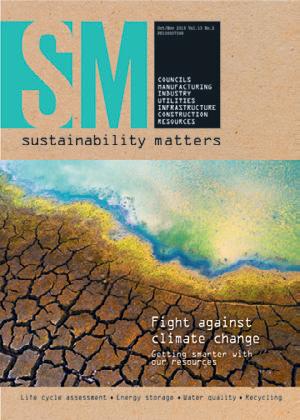
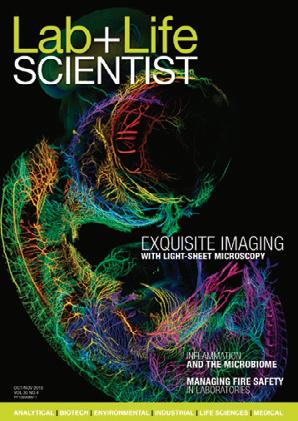
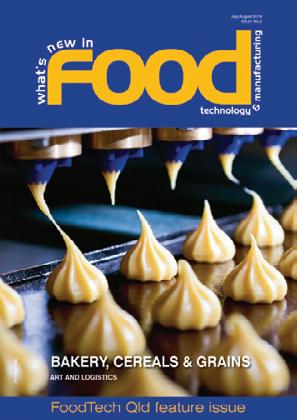
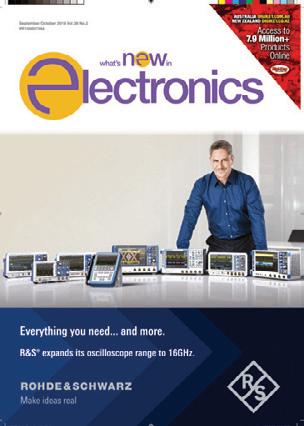
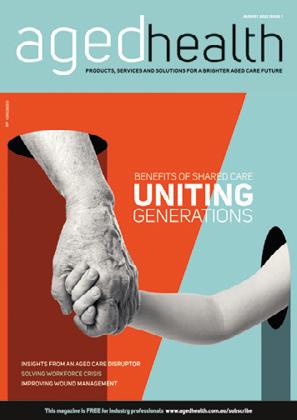


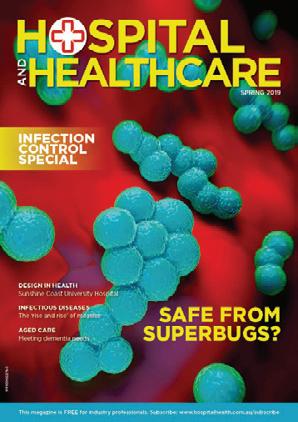
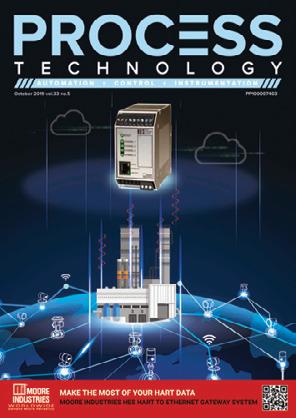
www.WFMedia.com.au/subscribe FREE to industry and business professionals The magazine you are reading is just one of 11 published by Westwick-Farrow Media. To receive your free subscription (magazine and eNewsletter), visit the link below.
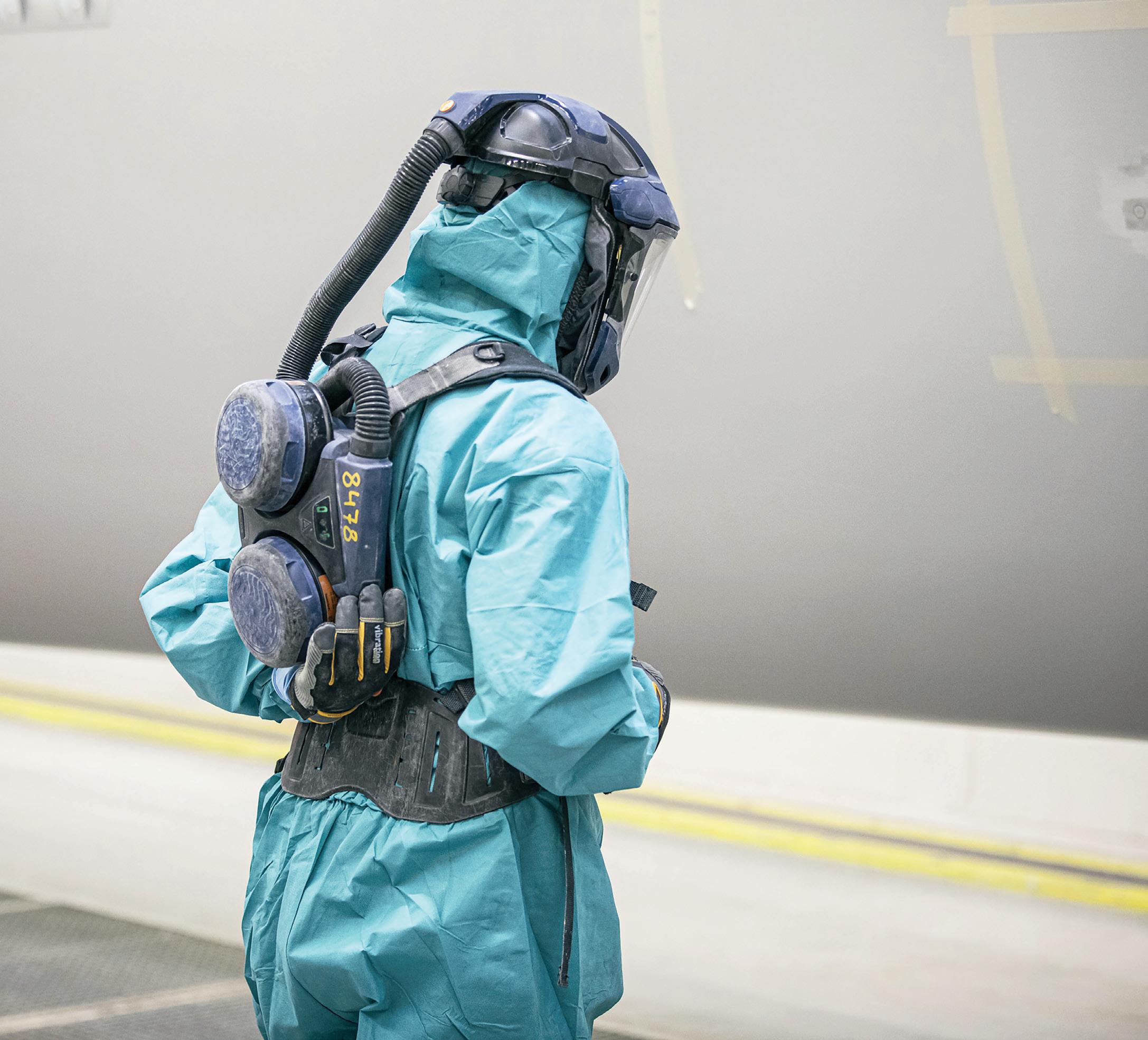

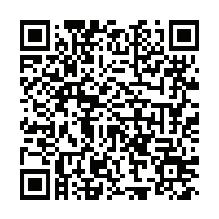

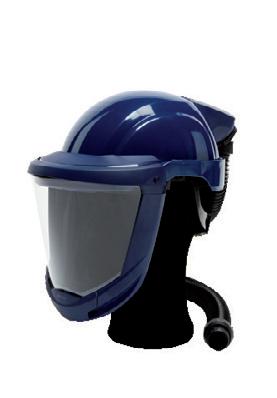
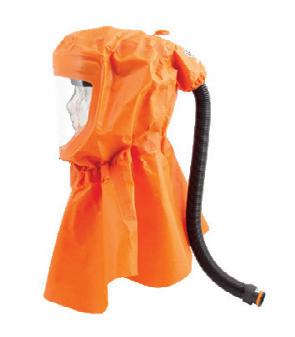












 Amy Steed Editor, Safety Solutions
Amy Steed Editor, Safety Solutions
















































































































